
Exploring Nature Writing: Examples and Tips for Writing About the Wild
by Kaelyn Barron | 1 comment

While many of our favorite stories describe epic adventures in the great outdoors, nature writing—writing about nature itself—has evolved as a genre in its own right.
This unique genre can inspire curiosity and awe in both its readers and writers, especially in an age characterized by digital screens and virtual experiences.
What Is Nature Writing?
The exact definition of nature writing can be hard to pinpoint. If you ask Wikipedia, it’s “nonfiction or fiction prose or poetry about the natural environment.” So, pretty much anything that describes rolling hills or migrating butterflies goes, right?
Actually, most works that are considered “nature writing” today can best be classified as creative nonfiction . In Beyond Nature Writing , ecocritic and writer Michael P. Branch explains that the term “has usually been reserved for a brand of nature representation that is deemed literary, written in the speculative personal voice, and presented in the form of the nonfiction essay.”
The genre can be traced back to the 18th century, with many regarding English naturalist Gilbert White’s Natural History and Antiquities of Selborne one of the earliest examples.
Some observers have noted that we’re currently experiencing a “ golden age of nature writing ,” as digital fatigue and a suffering environment have piqued an interest in the natural world and all its wonders.
Examples of Nature Writing
This renaissance has produced a wave of outstanding nature-centered writings that are soon to become classics. Here are 3 examples:
Braiding Sweetgrass by Robin Wall Kimmerer
Indigenous scientist Robin Wall Kimmerer illustrates how other living creatures—from sweetgrass to salamanders—can provide us with priceless gifts and lessons in what has been acclaimed as a “Best Essay Collection of the Decade.”
Her reflections all circle back to one central argument: that in order to awaken ecological consciousness, we must “acknowledge and celebrate our reciprocal relationship with the rest of the living world.” Kimmerer brilliant descriptions capture the beauty of our world will surely stay with you long after you’ve read the last page.
A Field Guide to Getting Lost by Rebecca Solnit
This series of autobiographical essays draws on moments and memories from the author’s life and relationships, exploring themes of uncertainty, trust, loss, desire, and place. Solnit examines the stories we use to navigate our way through the world, from wilderness to cities.
In one anecdote, she ponders the fate of tortoises, reflecting on a memory of riding one at a zoo, while contemplating their (and our) disintegrating environment.
H Is for Hawk by Helen Macdonald
H Is for Hawk has been featured on more than 25 “Best Books of the Year” lists, including Time, NPR, and Vogue. It tells the story of how Macdonald spent 800 British pounds on a goshawk in a moment of grief after her father’s death, then tried to train it.
We see how the goshawk’s temperament mirrors the author’s state of grief, as together they “discover the pain and beauty of being alive.”
What Is the Purpose of Nature Writing?
Nature is full of inspiration, and as such, it can easily serve as a muse for writers. In nature, we might find metaphors for our own human experiences that we never considered before.
For example, in literature, rivers are often regarded as symbols of life and the passage of time: the source of rivers (small mountain streams) represents the beginnings of life, and its meeting with the ocean represents the end of life. And, like life itself, it continues to push on in an endless cycle, no matter what happens.
Thus, writing (and reading) about nature allows us space to reflect on life and the many ways it mirrors our own human experiences.
Over the last century, nature writing has also become a means of advocacy for the environment by calling attention to environmental issues and trying to inspire a greater interest in nature.
How to Practice Nature Writing
Nature writing has grown in popularity as a genre in recent years, but writing about nature in general can also be a great creative exercise, as it encourages you to observe details and put those observations into words.
You can use these tips to practice nature writing:
1. Always keep a notebook handy.
The first thing you want to do is ensure that you always have a notebook and pen handy to jot down your ideas and observations, no matter where you are.
Pocket notebooks easily fit into backpacks, handbags, and yes, even most pockets!
Don’t assume that you can just write everything down when you get home. Many subtle details and nuances can be lost, even just hours later, if you don’t record them there in the moment.
2. Observe.
When you’re spending time in nature, don’t worry about brainstorming the most poetic way to describe the falling leaves; you can always refine your writing later.
For now, just focus on recording your own feelings and observations. Let your thoughts flow freely onto the paper, without pausing to self-edit or worry about proper spelling and punctuation.
3. Focus on sensory details.
As with nearly all types of writing, nature writing is always better when you focus on showing, not telling . This means using sensory details to describe your surroundings and experiences.
However, be careful to avoid cliches . Find your own ways to describe the nature around you, rather than recycling the same tired similes and metaphors that have been written a million times.
4. Make connections.
Yes, nature writing means a lot of writing about nature, but that doesn’t mean your topics of discussion are limited to the sound of the wind and birds chirping.
If you find that certain memories or thoughts come up while you’re spending time in nature, write those down too. This can help you practice building connections, which will enrich your writing and help you convey larger themes .
What about nature inspires you to write? Share your thoughts in the comments below!
If you enjoyed this post, then you might also like:
- What Is Creative Nonfiction? Definitions, Examples, and Guidelines
- Sports Writing: Types, Examples, and Tips for Better Reporting
- How to Make Money Writing Nonfiction: 20 Job Opportunities for Freelance Writers
- What Is Creative Writing? Types, Techniques, and Tips
As a blog writer for TCK Publishing, Kaelyn loves crafting fun and helpful content for writers, readers, and creative minds alike. She has a degree in International Affairs with a minor in Italian Studies, but her true passion has always been writing. Working remotely allows her to do even more of the things she loves, like traveling, cooking, and spending time with her family.
I’m writing a paper about dominant trends in nature writing and want to ask a few questions, interview or email or just read anything you might want to share. THank you

Learn More About
- Fiction (223)
- Nonfiction (71)
- Blogging (46)
- Book Promotion (28)
- How to Get Reviews (9)
- Audiobooks (17)
- Book Design (11)
- Ebook Publishing (13)
- Hybrid Publishing (8)
- Print Publishing (9)
- Self Publishing (70)
- Traditional Publishing (53)
- How to Find an Editor (11)
- Fitness (4)
- Mindfulness and Meditation (7)
- Miscellaneous (116)
- New Releases (17)
- Career Development (73)
- Online Courses (46)
- Productivity (45)
- Personal Finance (21)
- Podcast (179)
- Poetry Awards Contest (2)
- Publishing News (8)
- Readers Choice Awards (5)
- Reading Tips (145)
- Software (17)
- Technology (15)
- Contests (4)
- Grammar (59)
- Word Choice (64)
- Writing a Book (62)
- Writing Fiction (195)
- Writing Nonfiction (68)

Nature Writing Examples
by Lisa Hiton
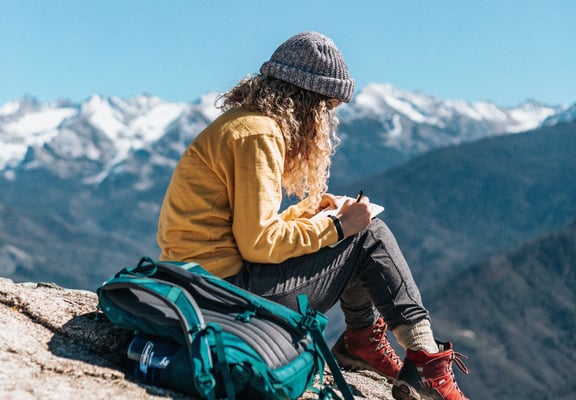
From the essays of Henry David Thoreau, to the features in National Geographic , nature writing has bridged the gap between scientific articles about environmental issues and personal, poetic reflections on the natural world. This genre has grown since Walden to include nature poetry, ecopoetics, nature reporting, activism, fiction, and beyond. We now even have television shows and films that depict nature as the central figure. No matter the genre, nature writers have a shared awe and curiosity about the world around us—its trees, creatures, elements, storms, and responses to our human impact on it over time.
Whether you want to report on the weather, write poems from the point of view of flowers, or track your journey down a river in your hometown, your passion for nature can manifest in many different written forms. As the world turns and we transition between seasons, we can reflect on our home, planet Earth, with great dedication to description, awe, science, and image.
Journal Examples: Keeping Track of Your Tracks
One of the many lost arts of our modern time is that of journaling. While keeping a journal is a beneficial practice for all, it is especially crucial to nature writers. John A. Murray , author of Writing About Nature: A Creative Guide , begins his study of the nature writing practice with the importance of journaling:
Nature writers may rely on journals more consistently than novelists and poets because of the necessity of describing long-term processes of nature, such as seasonal or environmental changes, in great detail, and of carefully recording outdoor excursions for articles and essays[…] The important thing, it seems to me, is not whether you keep journals, but, rather, whether you have regular mechanisms—extended letters, telephone calls to friends, visits with confidants, daily meditation, free-writing exercises—that enable you to comprehensively process events as they occur. But let us focus in this section on journals, which provide one of the most common means of chronicling and interpreting personal history. The words journal and journey share an identical root and common history. Both came into the English language as a result of the Norman Victory at the Battle of Hastings in 1066. For the next three hundred years, French was the chief language of government, religion, and learning in England. The French word journie, which meant a day’s work or a day’s travel, was one of the many words that became incorporated into English at the time[…]The journal offers the writer a moment of rest in that journey, a sort of roadside inn along the highway. Here intellect and imagination are alone with the blank page and composition can proceed with an honesty and informality often precluded in more public forms of expression. As a result, several important benefits can accrue: First, by writing with unscrutinized candor and directness on a particular subject, a person can often find ways to write more effectively on the same theme elsewhere. Second, the journal, as a sort of unflinching mirror, can remind the author of the importance of eliminating self-deception and half-truths in thought and writing. Third, the journal can serve as a brainstorming mechanism to explore new topics, modes of thought, or types of writing that otherwise would remain undiscovered or unexamined. Fourth, the journal can provide a means for effecting a catharsis on subjects too personal for publication even among friends and family. (Murray, 1-2)
A dedicated practice of documenting your day, observing what is around you, and creating your own field guide of the world as you encounter it will help strengthen your ability to translate it all to others and help us as a culture learn how to interpret what is happening around us.
Writing About Nature: A Creative Guide by John A. Murray : Murray’s book on nature writing offers hopeful writers a look at how nature writers keeps journals, write essays, incorporate figurative language, use description, revise, research, and more.
Botanical Shakespeare: An Illustrated Compendium of All the Flowers, Fruits, Herbs, Trees, Seeds, and Grasses Cited by the World’s Greatest Playwright by Gerit Quealy and Sumie Hasegawa Collins: Helen Mirren’s foreword to the book describes it as “the marriage of Shakespeare’s words about plants and the plants themselves.” This project combines the language of Shakespeare with the details of the botanicals found throughout his works—Quealy and Hasegawa bring us a literary garden ripe with flora and fauna puns and intellectual snark.
- What new vision of Shakespeare is provided by approaching his works through the lens of nature writing and botanicals?
- Latin and Greek terms and roots continue to be very important in the world of botanicals. What do you learn from that etymology throughout the book? How does it impact symbolism in Shakespeare’s works?
- Annotate the book using different colored highlighters. Seek out description in one color, interpretation in another, and you might even look for literary echoes using a third. How do these threads braid together?
The Living Mountain: A Celebration of the Cairngorm Mountains of Scotland by Nan Shepherd : The Living Mountain is Shepherd’s account of exploring the Cairngorm Mountains of Scotland. Part of Britain’s Arctic, Shepherd encounters ravenous storms, clear views of the aurora borealis, and deep snows during the summer. She spent hundreds of days exploring the mountains by foot.
- These pages were written during the last years of WWII and its aftermath. How does that backdrop inform Shepherd’s interpretation of the landscape?
- The book is separated into twelve chapters, each dedicated to a specific part of life in the Cairngorms. How do these divisions guide the writing? Is she able to keep these elements separate from each other? In writing? In experiencing the land?
- Many parts of the landscape Shepherd observes would be expected in nature writing—mountains, weather, elements, animals, etc. How does Shepherd use language and tone to write about these things without using stock phrasing or clichéd interpretations?
Birds Art Life: A Year of Observation by Kyo Maclear : Even memoir can be delivered through nature writing as we see in Kyo Maclear’s poetic book, Birds Art Life . The book is an account of a year in her life after her father has passed away. And just as Murray and Thoreau would advise, journaling those days and the symbols in them led to a whole book—one that delicately and profoundly weaves together the nature of life—of living after death—and how art can collide with that nature to get us through the hours.
- How does time pass throughout the book? What techniques does Maclear employ to move the reader in and out of time?
- How does grief lead Maclear into art? Philosophy? Nature? Objects?
- The book is divided into the months of the year. Why does Maclear divide the book this way?
- What do you make of the subtitles?
Is time natural? Describe the relationship between humans and time in nature.
So dear writers, take to these pages and take to the trails in nature around you. Journal your way through your days. Use all of your senses to take a journey in nature. Then, journal to make a memory of your time in the world. And give it all away to the rest of us, in words.
Lisa Hiton is an editorial associate at Write the World . She writes two series on our blog: The Write Place where she comments on life as a writer, and Reading like a Writer where she recommends books about writing in different genres. She’s also the interviews editor of Cosmonauts Avenue and the poetry editor of the Adroit Journal .

Share this post:
Similar Blogs
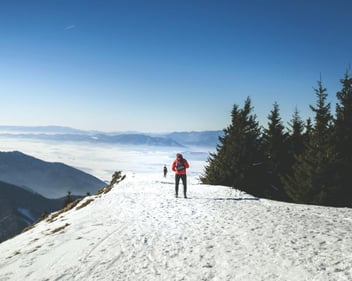
Creative Nonfiction Competition 2020 Winners Announced
Submissions to our Creative Nonfiction Competition carried readers into the lives of writers...
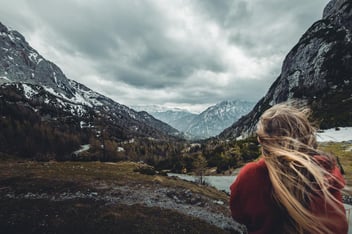
Creative Nonfiction Writing Tips with Rachel Friedman
Creative nonfiction invites writers and readers to look through a magnifying glass at the world...

Writing Tips from the Winners of our Sci-Fi & Fantasy Competition!
“Sci-fi and fantasy speculate on alternative ways of life, drawing readers into an entirely...
- Skip to main content
- Keyboard shortcuts for audio player
Book News & Features
The workings of nature: naturalist writing and making sense of the world.
Genevieve Valentine

Buy Featured Book
Your purchase helps support NPR programming. How?
- Independent Bookstores
"In every generation and among every nation, there are a few individuals with the desire to study the workings of nature; if they did not exist, those nations would perish."
-- Al-Jahiz, The Book of Animals
In 185 AD, Chinese astronomers recorded a supernova. Among more detached details of its appearance, there is this: "It was like a large bamboo mat. It displayed the five colors, both pleasing and otherwise."
The attempt to ground the unknown within the familiar — and the editorial aside of "otherwise" — cuts to the heart of naturalist writing. Nearly 2000 years later, Carl Sagan did the same in Cosmos , condensing astronomy to its component parts: facts and wonder.
We've been curious about the natural world since before recorded time; the history of naturalism is human history. By the ninth century, al-Jahiz's multi-volume History of Animals combined zoological folklore with scientific observation, including theories of natural selection. In the early 20th century, Sioux author Zitkala-Ša wrote landscapes intertwined with the personal, which became a model for the form. In 1962, Rachel Carson's ecological manifesto Silent Spring was a deciding factor in banning DDT.
The best naturalist writing delivers both a secondhand thrill of obsession and a jolt of protectiveness for what's been discovered. Some of it reveals as much about the author as the surroundings. (Carl Linnaeus' 1811 Tour of Lapland manuscript cuts off a paragraph about wedding customs mid-sentence, picking up again with a breathless catalog of marsh plants.) And naturalists themselves are shaped by the lure of landscapes on the page. Robert MacFarlane's Landmarks explores the British countryside using others' writing as an interior map that challenges him to approach familiar places in new ways.
We love reading about nature for the same reason naturalists love being ankle-deep in marshes: Nature provides enough order to soothe and enough entropy to surprise. It's also why so many involve a person in the landscape; understanding our place in the world is as important as understanding the world itself. We read the work of naturalists to capture that sense of discovery made familiar. They present worlds we've never seen, and make us care as if they were our own backyards.
Not every naturalist sets out to be an activist; this is a literary tradition as much as a scientific one. But there are threads that connect naturalist literature, across continents and centuries. It's driven by an environmental curiosity that integrates the scientific and the spiritual; facts inspire wonder, rather than quench it. And every piece of naturalist literature, from al-Jahiz to today, makes a case for preserving the world it sees.

The Invention of Nature
Some naturalists actually do try to encompass the world entire. In The Invention of Nature , Andrea Wulf follows Alexander Humboldt's expeditions in Latin America and European royal courts, painting a portrait of a man whose hunger for knowledge — and constant pontificating about it — bordered on caricature. Humboldt's legacy is the 'web of life' his work conveyed to a lay audience. That interconnectedness made him an early conservationist; by 1800 he was noting adverse effects "when forests are destroyed, as they are everywhere in America by European planters, with an imprudent precipitation."
But he wasn't the first to catalog the systems of life. A century before Humboldt, German-born naturalist Maria Sybilla Merian was in Surinam, recording her life's passion: butterflies, moths, and insects. Chrysalis , Kim Todd's biography of this amateur scientist who established the idea of a life cycle, aims for a sly impression of Merian, down to the subject matter: "Insects," Todd explains, "generally gave off a whiff of vice." Merian's engravings made life cycles palpable for a public who still believed rotten meat spontaneously transformed into flies; it was impressive enough to change assumptions about the natural world (though Merian's credit waned as male scientists began absorbing her work into their own).

Pilgrim at Tinker Creek
To write about the world around us is to write about people, whether cataloging the unknown or coming to terms with one's backyard. This is the dynamic at the heart of Annie Dillard's Pilgrim at Tinker Creek , which carries a touch of the hymnal (and a grim streak that has a grandmother in Merian's engraving of a tarantula devouring a bird), and Barbara Hurd's Stirring the Mud , a love letter swamps, bogs, and "the damp edges of what is most commonly praised." And few naturalists write themselves into their landscapes quite so drily as M. Krishnan. The essays in Of Birds and Birdsong carry a sense of magical realism; always scientifically rigorous (his bird descriptions are those of a man looking for a particular friend in a crowd of thousands), Krishnan writes himself as a resigned meddler in avian affairs; he could try to be invisible among nature's bounty, but then who'd train his pigeons?
Of course, some writers have to fight to be seen on the landscape at all. Enter The Colors of Nature , an anthology of nature writing by people of color edited by Alison H. Deming and Lauret E. Savoy, providing deeply personal connections to — or disconnects from — nature. Jamaica Kincaid's "In History" considers naturalism in the aftermath of colonialism, asking a crucial question for naturalism in a global context: "What should history mean to someone who looks like me?" And Joseph Bruchac's travel diary is pragmatism shot through with hope; "Our old words keep returning to the land."

The Colors of Nature
For others, the internal landscape and that hope for the natural world must be rediscovered in tandem. In Braiding Sweetgrass , botanist Robin Wall Kimmerer tackles everything from sustainable agriculture to pond scum as a reflection of her Potawatomi heritage, which carries a stewardship "which could not be taken by history: the knowing that we belonged to the land." That sense of connection, or the loss of it, is the spine of the book: mucking out a pond is a microcosm, agriculture becomes rumination on symbiosis, and mast fruiting of pecan trees parallels human and plant communities.
It's a book absorbed with the unfolding of the world to observant eyes — that sense of discovery that draws us in. Happily for armchair naturalists, mysteries of the natural world never stop unfolding; but increasingly, a sense of impending doom accompanies the delight of knowledge. Kimmerer mentions a language between trees as something awaiting more specific study; it arrives later this year in Peter Wohlleben's The Hidden Life of Trees . A no-nonsense writing style — he came, he studied, here's how to date a forest via its weevil population — frames a deeply conservationist argument: Trees harbor not only ecosystems, but feelings, vocabulary, and etiquette. Hidden Life is designed to be an arboreal Silent Spring .

For some places, however, no revelations are yet possible; the world being studied is simply too mysterious to be yet wholly understood. With meditative prose, 1986's Arctic Dreams chronicled Barry Lopez's expeditions in an ecosystem so punishing half an animal population can die every winter, and so otherworldly animal fat is preserved on bones after a century. "Something eerie ties us to the world of animals," he says, and it's both a warning and a promise. In The Whale: In Search of the Giants of the Deep, Philip Hoare's marine obsession is similarly dreamlike; for him, what we know about whales and how they make us feel is deeply linked. After all, our 'discovery' of them is still in its first blush. Sperm whales were first filmed in 1984; "We knew what the world looked like before we knew what the whale looked like." The only absolute conclusion in his book is a stern one: Humanity's damaging effects on nature and its fascination with the unknown has been devastating; if we're going to keep whales long enough to know them, that fascination will have to take a more protective turn.
To write about the world around us is to write about people, whether cataloging the unknown or coming to terms with one's backyard. These narratives are crucial, especially now — stories of the worth of nature, even just as a mirror of ourselves, build a narrative in which nature's something worth saving. It's imperfect; making nature an object rather than a subject prevents us from seeing ourselves as part of natural patterns of cause and effect. But in The Colors of Nature, Aileen Suzara pins it down: "The landscape is a narrative, not a narrator, because it has no human voice." The human voice that looked at the dark and saw a dying star is heard 2000 years later. If we're going to have another 2000 years, there's no time like the present to start listening.
Genevieve Valentine's latest novel is Icon.
Disabled Poets Prize
Deptford literature festival, nature nurtures, early career bursaries, criptic x spread the word, lewisham, borough of literature, a pocket guide to nature writing.
In this glorious Pocket Guide, Kerri ní Dochartaigh highlights the value of Nature writing, whilst sharing her personal tips, resources and opportunities on how you can get inspired to write.
What do we really mean when we talk about ‘nature writing’? And what do we even mean when we talk about ‘nature’?
Nature writing , like pockets , is a politicised thing – embroidered with different threads; depending on your race , class , gender , (dis)ability, wealth or place in this world. Is there space here for you? Do you feel safe? There has never been a more important time to make safe space: for every single thing on this earth. The writing, then, will just do its own thing, you see. It will come and go as it pleases, like a moth to a big aul’ light.
How about a wee browse through these background reads , and then we might, in the words of Edwyn Collins , (the most inspiring nature punk on earth): ‘Rip it up and start again’?… (What is nature writing if not the constant riotous act of starting again? Of learning, again, to listen and to look, to draw close and keep our distance, to break and to weep; to get back up and love the world afresh?) In this NY Times piece three and a half decades ago, David Rains Wallace wrote ‘NATURE writing is a historically recent literary genre, and, in a quiet way, one of the most revolutionary.’
We’re ready for this revolution but who is going to lead it?
For far too long we have allowed a very particular voice, from a very particular background, with a very particular outlook – dominate bookshop displays, library shelves, reading lists, bestseller rankings and our own homes. This, the idea that there has only ever been one nature story, is wildly incorrect. Other standpoints, other views, other stories, other voices: have always been there. In ‘Heart Berries’ Terese Marie Mailhot summarises: ‘So, where are we? Where we have always been. Where are you?’
To write about nature with truth and integrity means to ask questions about the past and the future – who, where and what have been mistreated – and how do we make that stop, through how we approach this genre? I only want to be a part of any gathering where every single one of us is there as an equal.
So, who is doing the important work in this area? Where should you go to read more? Where should you send your fledgling words?
Let’s start with The Willowherb Review because I think they are incredible. Their aim is ‘to provide a digital platform to celebrate and bolster nature writing by emerging and established writers of colour’, and already their writers have seen prize nominations and awards (all links on the site). Most importantly of all the writing is cracking; beautiful, raw and necessary. Jessica J Lee, the editor, has a no nonsense approach to the genre that I deeply admire. If you are a nature writer of colour, check out their website for submission dates.
Jessica has also organised a reading group, Allies in the Landscape , a fantastic support for nature writers and anyone wanting to widen their reading in the genre.
The folks at Caught by the River do stellar work for those who love the natural world across a plethora of genres. If you are in need of inspiration, or events to go to when we can, start here. You will not be let down. They read everything they’re sent but are a busy crew so – as with submitting anywhere, patience is kindness.
More folks with big hearts and brilliant writing are The Clearing .
The art of nature writing itself can be a children’s story, a poem, a list, a eulogy, a translation – it can be fiction or non – written or other – short or long; it is anything that takes our world and makes it sing. The best nature writing, for me, speaks of transformation – anything from a fiercely hungry caterpillar, through to strong women swimming themselves to safe places – making lists of yellow things for their sick fathers – moulding grief through sowing seeds: the best nature writers might not even call themselves that at all. Some books I have recently loved are: ‘ Trace’ by Lauret Savoy, ‘Braiding Sweet Grass’ by Robin Wall Kimmerer Elizabeth J Burnett’s ‘ The Grassling’ , ‘ Bulbul Calling’ by Pratyusha, Seán Hewitt’s ‘ Tongues of Fire’ , Jessica J Lee’s ‘ Two Trees Make a Forest’ , ‘The Promise’ by Nicola Davies and ‘ The Diary of a Young Naturalist’ by Dara McAnulty. I return over and over to writers like Amy Liptrot, Kathleen Jamie, Annie Dillard, Robert McFarlane and others but I am constantly trying to find new voices, approaches and stories – new to me, not new in their existence, of course: it’s important to make that distinction in a genre such as this.
The important thing, needed now more than ever, is that they each take their place in this symphony of hope.
There is room, here, on these mountains and beaches, in these gardens and fields, in these bodies of water – in ASDA parking lots and unsafe spaces – on the streets, and in every place both ‘wild’ and not (both outer and inner) – for you and your story.
From me to you, here a few exercises I return to over and over as a means to get started…
Choose something – a moth, the colour blue, a tree, a wren, a pebble, the waves on the beach – and write about it as if the reader will have never before seen or heard of it. Really stay with the description for as long as you can, and try to get down to what it really is: its thingness. Make your description almost like a love letter in how much care you take with it, and the depth of your words. Another interesting take on this is to write yourself as the thing – to really imagine, say, going through all the stages of the cycle from caterpillar to moth – or the ebb and flow you would experience as a particular body of water etc.
Journal – at least three free-flow pages without thinking about them or rereading – every single day. This one really helps to get me out of my normal flow of thought, and does something to my brain that welcomes experiences, creatures and thoughts that are conducive to nature writing. It really doesn’t matter if I am not writing about nature in these pages, really that is not the point, I think it’s in the act of carving out space and time – bringing awareness to the act. The space in which I write these can be a cafe, on a train, or at home, and still I find myself in a wild place, one that is on the inside not the outside.
The thing that most helps me to write about the natural world is actually being in it – walking, swimming, running, laying, laughing, crying – just allowing myself to be outside as much as I can seems to be the best way for me to try to write about the world we share.
Once you feel more confident, you might be interested in entering your writing into a prize or sharing it online (an incredible amount of links can also be found in the hyperlinked pages too) and I can share only a fraction but here are a few that sing to me:
https://nanshepherdprize.com This prize is changing the landscape of this genre. Every single section on the site is invaluable.
https://www.thenaturelibrary.com
Christina Riley has put such a wonderful thing together here. Have a browse / follow.
https://www.lonewomeninflashesofwilderness.com/about
Clare Archibald’s inspiring, inclusive site is really making ripples in this area.
https://beachbooks.blog/about/ A gorgeous, generous sea library full of joy.
https://www.elementumjournal.com Submissions are closed for this journal but there is lots of fine work to peruse.
https://www.elsewhere-journal.com This is a superb journal of place, and submission are open.
The Moth Nature Writing prize , The Rialto Nature Poetry Competition and others are great to look at too. There are courses, schemes and more online but I think the most important place to start is by looking and listening, reading and caring; by loving the world and by writing it down in any way you can.
For me, any time any of us looks and listens to the non-human beings we share this earth with – when we pause in humility to acknowledge the interconnectedness of us all – the threads tying us to each other; invisible often, but so strong – we are playing a part in making this a safer, fairer earth. To go one step further, and to write about this connection, to name, explore, celebrate and honour – whether we choose a swan or a stone, a moth or a lough, the wild sea or our gut flora; things nearby or faraway, the known or unknown – we are shining light on one of the most important truths of this earth: our need to be alive, and to remain connected to every other living thing. There is power in trying to find traces of ourselves in the nonhuman, as well as acknowledging our difference. In searching for the beat of something unnameable; the simple act of being alive, at the same time, as each other, and in the same way as even the smallest insect.
Nature Writing holds the hope, for me, of reminding us how to treat everyone and everything on the earth. The best nature writing shines light on places we need to see; on beings we need to learn to accept as our equal. It is only a proper telling of the earth if we can tread gently on the land and the non-human as well as human while we do it. If we can speak honestly of the places and the past – if we can find a way to write it where every single one of us is heard; where each one of us, and our stories, are kept safe.
Kerri ní Dochartaigh is from the North West of Ireland but now lives in the very middle. She writes about nature, literature and place for The Irish Times, The Dublin Review of Books, Caught By The River and others. Her first book, Thin Places , is out with Canongate in January 2021. @kerri_ni @whooperswan
Published 7 July 2020
Two free BSL interpreted workshops for London writers on crafting your application for Arts Council England funding
- Opportunities
The Basics Course is open for booking!
Read the 2024 nature nurtures anthology & watch the nature nurtures short films, announcing the winners of the lba literary agency feedback opportunity 2024, stay in touch, join london writers network, spread the word’s e-newsletter.
Sign up to our mailing list to keep up to date with Spread the Word’s news and opportunities.
What is Nature Writing?
Definition and Examples
- An Introduction to Punctuation
- Ph.D., Rhetoric and English, University of Georgia
- M.A., Modern English and American Literature, University of Leicester
- B.A., English, State University of New York
Nature writing is a form of creative nonfiction in which the natural environment (or a narrator 's encounter with the natural environment) serves as the dominant subject.
"In critical practice," says Michael P. Branch, "the term 'nature writing' has usually been reserved for a brand of nature representation that is deemed literary, written in the speculative personal voice , and presented in the form of the nonfiction essay . Such nature writing is frequently pastoral or romantic in its philosophical assumptions, tends to be modern or even ecological in its sensibility, and is often in service to an explicit or implicit preservationist agenda" ("Before Nature Writing," in Beyond Nature Writing: Expanding the Boundaries of Ecocriticism , ed. by K. Armbruster and K.R. Wallace, 2001).
Examples of Nature Writing:
- At the Turn of the Year, by William Sharp
- The Battle of the Ants, by Henry David Thoreau
- Hours of Spring, by Richard Jefferies
- The House-Martin, by Gilbert White
- In Mammoth Cave, by John Burroughs
- An Island Garden, by Celia Thaxter
- January in the Sussex Woods, by Richard Jefferies
- The Land of Little Rain, by Mary Austin
- Migration, by Barry Lopez
- The Passenger Pigeon, by John James Audubon
- Rural Hours, by Susan Fenimore Cooper
- Where I Lived, and What I Lived For, by Henry David Thoreau
Observations:
- "Gilbert White established the pastoral dimension of nature writing in the late 18th century and remains the patron saint of English nature writing. Henry David Thoreau was an equally crucial figure in mid-19th century America . . .. "The second half of the 19th century saw the origins of what we today call the environmental movement. Two of its most influential American voices were John Muir and John Burroughs , literary sons of Thoreau, though hardly twins. . . . "In the early 20th century the activist voice and prophetic anger of nature writers who saw, in Muir's words, that 'the money changers were in the temple' continued to grow. Building upon the principles of scientific ecology that were being developed in the 1930s and 1940s, Rachel Carson and Aldo Leopold sought to create a literature in which appreciation of nature's wholeness would lead to ethical principles and social programs. "Today, nature writing in America flourishes as never before. Nonfiction may well be the most vital form of current American literature, and a notable proportion of the best writers of nonfiction practice nature writing." (J. Elder and R. Finch, Introduction, The Norton Book of Nature Writing . Norton, 2002)
"Human Writing . . . in Nature"
- "By cordoning nature off as something separate from ourselves and by writing about it that way, we kill both the genre and a part of ourselves. The best writing in this genre is not really 'nature writing' anyway but human writing that just happens to take place in nature. And the reason we are still talking about [Thoreau's] Walden 150 years later is as much for the personal story as the pastoral one: a single human being, wrestling mightily with himself, trying to figure out how best to live during his brief time on earth, and, not least of all, a human being who has the nerve, talent, and raw ambition to put that wrestling match on display on the printed page. The human spilling over into the wild, the wild informing the human; the two always intermingling. There's something to celebrate." (David Gessner, "Sick of Nature." The Boston Globe , Aug. 1, 2004)
Confessions of a Nature Writer
- "I do not believe that the solution to the world's ills is a return to some previous age of mankind. But I do doubt that any solution is possible unless we think of ourselves in the context of living nature "Perhaps that suggests an answer to the question what a 'nature writer' is. He is not a sentimentalist who says that 'nature never did betray the heart that loved her.' Neither is he simply a scientist classifying animals or reporting on the behavior of birds just because certain facts can be ascertained. He is a writer whose subject is the natural context of human life, a man who tries to communicate his observations and his thoughts in the presence of nature as part of his attempt to make himself more aware of that context. 'Nature writing' is nothing really new. It has always existed in literature. But it has tended in the course of the last century to become specialized partly because so much writing that is not specifically 'nature writing' does not present the natural context at all; because so many novels and so many treatises describe man as an economic unit, a political unit, or as a member of some social class but not as a living creature surrounded by other living things." (Joseph Wood Krutch, "Some Unsentimental Confessions of a Nature Writer." New York Herald Tribune Book Review , 1952)
- Creative Nonfiction
- The Conservation Movement in America
- What Is Literary Journalism?
- A Guide to All Types of Narration, With Examples
- Defining Nonfiction Writing
- An Introduction to Literary Nonfiction
- Biography of Henry David Thoreau, American Essayist
- What You Should Know About Travel Writing
- Notable Authors of the 19th Century
- The Essay: History and Definition
- Thoreau's 'Walden': 'The Battle of the Ants'
- Top 5 Books about Social Protest
- Genres in Literature
- Must Reads If You Like 'Walden'
- Tips on Great Writing: Setting the Scene
- 100 Major Works of Modern Creative Nonfiction
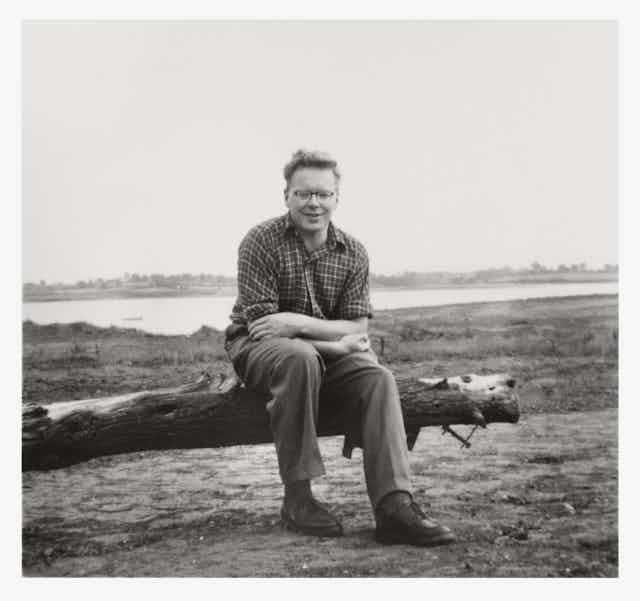
Meet J.A. Baker – the influential nature writer you’ve probably never heard of
Curator, Art & Special Collections, University of Essex
Disclosure statement
Sarah Demelo does not work for, consult, own shares in or receive funding from any company or organisation that would benefit from this article, and has disclosed no relevant affiliations beyond their academic appointment.
University of Essex provides funding as a member of The Conversation UK.
View all partners
John Alec Baker’s The Peregrine is both a brutal and beautiful observation of this bird of prey, which at the time of publication in 1967, was close to extinction. Transcending both nature writing and environmentalism, his novel continues to inspire and speak to new generations.
A new exhibition called Restless Brilliance: The Story of J.A. Baker and The Peregrine is on at Chelmsford Museum, Essex, until November 3. It showcases Baker’s life, highlights how The Peregrine still resonates today, and considers how his nature writing influenced the Essex landscape.
His legacy is not only in the beauty of The Peregrine’s prose, but in his archive, donated to the University of Essex in 2013, which I oversee as curator. When people visit the archive, they are always drawn first to Baker’s binoculars. They want to lift them up, look through them, and try and step into his world. To hold them and look up at the sky – Baker’s Essex sky.
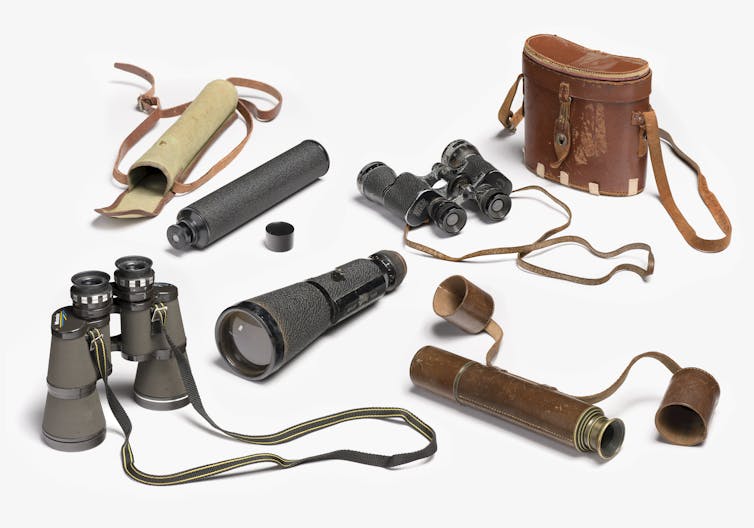
Born in Chelmsford, Essex in 1926, Baker dreamed of being a writer, but his father deeply disapproved of the idea. He found love, got married, and worked in various jobs he disliked, eventually settling at the Automobile Association.
Baker saw his first peregrine in the winter of 1955 and spent the next ten years systematically observing and recording them in the Essex countryside, writing “I spent all my winters searching for that restless brilliance, for the sudden passion and violence that peregrines flush from the sky.” He had found his muse in the peregrine.
The Peregrine recounts the story of a bird over ten winters, but Baker’s archive is the story of a very private man. Spanning his lifetime, the collection includes early correspondence, photographs of him and his wife Doreen taken by each other on trips to the Blackwater Estuary, and his ornithological material such as well-worn maps, birdwatching diaries, and his many binoculars and optics.
Sarah Harvey from Chelmsford Museum and I spent two years bringing Baker’s archive alive in the exhibition. But this story is not just about Baker. The exhibition also highlights the recovery of peregrines, which thanks to work by ornithologists and naturalists, UK breeding pairs are at their highest levels this century, with populations rebounding in East Anglia.
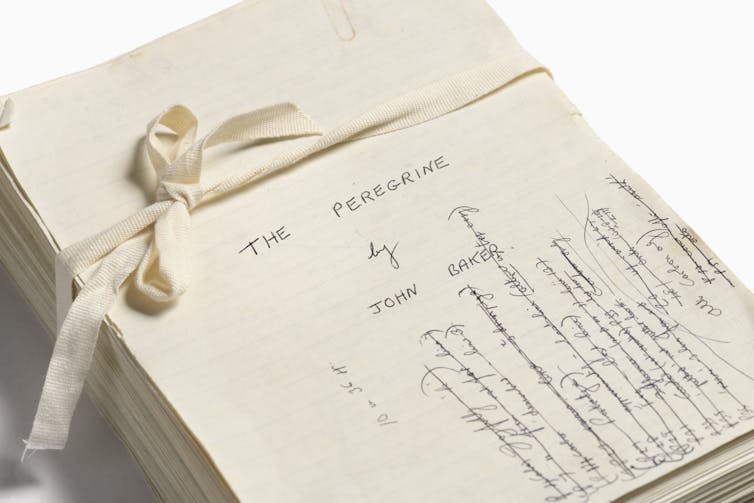
Baker’s landmark book, The Peregrine, is part-love letter and part-eulogy to a bird of prey under threat from human actions. Between 1940-1946, the government’s Destruction of Peregrine Falcons Order resulted in a cull of hundreds of peregrines to protect carrier pigeons that they prey on.
Then the rise in use of agricultural pesticides caused a decline in their reproduction rates and reduced the amount of calcium carbonate in their eggs causing them to thin and become accidentally crushed in their nests.
Baker knew where to lay the blame when he wrote “many die on their backs, clutching insanely at the sky in their last convulsions, withered and burnt away by the filthy, insidious pollen of farm chemicals”. The Peregrine became a call for greater environmental protections to save them from extinction.
Leaving a legacy
The Peregrine is highly regarded as a great example of nature writing. Some people have been drawn to the evocative language and the way he described his beloved peregrine and Essex landscape, others to his anger over the consequences of our actions and others still to how it made them feel.
TV presenter and naturalist Chris Packham described it as: “the very finest of prose, inspired by nature”. The Peregrine has influenced other high-profile naturalists and conservationists including Sir David Attenborough , who narrated the audiobook, and author Robert Macfarlane .
Baker’s legacy resonates deeply with inspiring filmmakers such as Shaunak Sen and Werner Herzog who said of The Peregrine: “It’s a most incredible book. It has prose of the calibre that we have not seen since Joseph Conrad — an ecstasy of a delirious sort of love for what he observes”.
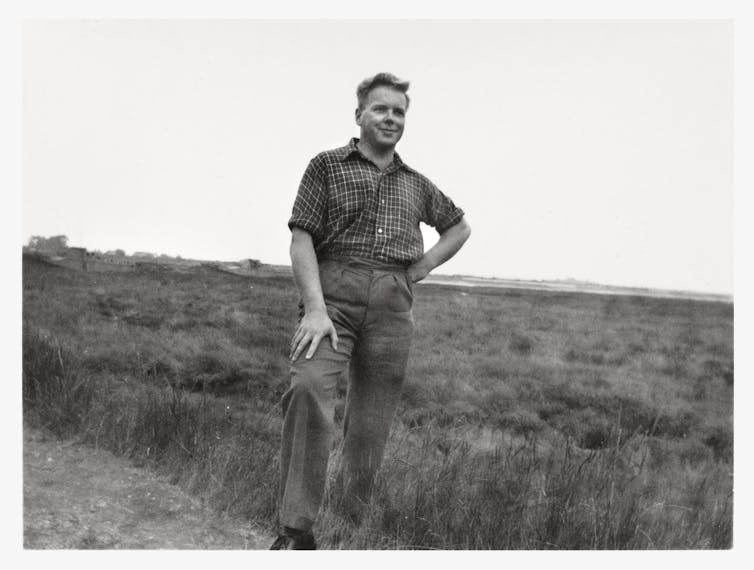
Today, peregrines are once again back in Baker’s Essex sky. Alongside Hetty Saunder’s brilliant biography of Baker, My House of Sky (2017), the exhibition draws upon his archive and some little-known letters of his from the Richard Burton Archives at Swansea University that give an extraordinary glimpse into his life.
In a 1946 letter to a friend, Baker wrote: “I feel a power within me that, if I do not cease to work and do not break fault with my ideals, will, I know carry my words to immortality.”
- Conservation
- Nature writing

Scholarships Manager

Audience Development Coordinator (fixed-term maternity cover)

Lecturer (Hindi-Urdu)

Director, Defence and Security

Opportunities with the new CIEHF
Become a Bestseller
Follow our 5-step publishing path.
Fundantals of Fiction & Story
Bring your story to life with a proven plan.
Market Your Book
Learn how to sell more copies.
Edit Your Book
Get professional editing support.
Author Advantage Accelerator Nonfiction
Grow your business, authority, and income.
Author Advantage Accelerator Fiction
Become a full-time fiction author.
Author Accelerator Elite
Take the fast-track to publishing success.
Take the Quiz
Let us pair you with the right fit.
Free Copy of Published.
Book title generator, nonfiction outline template, writing software quiz, book royalties calculator.
Learn how to write your book
Learn how to edit your book
Learn how to self-publish your book
Learn how to sell more books
Learn how to grow your business
Learn about self-help books
Learn about nonfiction writing
Learn about fiction writing
How to Get An ISBN Number
A Beginner’s Guide to Self-Publishing
How Much Do Self-Published Authors Make on Amazon?
Book Template: 9 Free Layouts
How to Write a Book in 12 Steps
The 15 Best Book Writing Software Tools
How To Write About Nature In 4 Important Steps
POSTED ON Apr 29, 2023
Written by Jackie Pearce
If you have ever stood in front of mountains, a large forest, or in front of the ocean, you might have felt a call to write about your experience.
Although a lot of us live indoors these days, nature still shapes so much of our lives and experiences in the world. Learning how to write about nature can make your novels even better.
Nature has been the topic of countless stories and personal essays throughout time. Even if you are writing a fictional book, there are most likely still elements of nature you will want to include throughout your story.
Nature can shape so much of a story, too. That is why so many creepy stories are set in remote cabins or in bad snowstorms. It adds a whole other element to deal with.
We will be going over some basics of what nature writing is, why it is important, and what you need to do to practice nature writing.
Get Our 6″ x 9″ Pre-Formatted Book Template for Word or Mac
We will send you a Book Template for US Trade (standard paperback size).
Nature Writing
The interest in nature writing.
Since the dawn of time, nature has played a huge role in books.
Whether it was describing the weather, documenting their journeys through nature, the call of the wild, writing a story that includes nature, or something else, it has been a common theme.
Of course, more people in the past spent time in the natural world compared to today and our air-conditioned offices, but as a writer you might need to include more nature writing into your book .
While there are not specific rules on how to write about nature, there are a few things you can do to help practice nature writing, which we will get into in a bit.
What is Nature Writing?
While there is not technically one definition to nature writing, the Wikipedia definition for it is, “nonfiction or fiction prose or poetry about the natural environment.”
That is a pretty wide definition, so it can be technically hard to pinpoint what fits in the boundaries of nature writing.
For the purpose of this article, let's assume that you are writing a novel and you want to include elements of nature in your story, or make it the central point of conflict.
Why Write About Nature
There are a lot of reasons that people might want to write about nature.
You might want to write strictly about nature in a scientific way.
You might want to include nature as a huge part of the book you are writing. Most novels include nature writing in some way, shape, or form, even just to set a backdrop for where the characters are.
Some take it another level, and make nature a whole driving force behind the plot. For example, if characters are stranded at sea, the ocean itself is its own driving force.
Alternatively, you could even be creating a whole new type of planet or nature in one of your books, but you need to pull inspiration from certain aspects of nature in order to create it.
How to Write About Nature
Now that we have covered some of the basics of nature writing, now we will dive into some tips and tricks you can use to get started.
#1 – Spend more time observing nature
It is hard to write about something you do not know much about. It is a good idea to spend more time in nature observing everything you can.
Bring a notebook with you and notice how the ground looks, what colors are all around you, any animals you see, mythical creatures and characters you're imaging, the sounds you notice, and everything else you experience. Get your hands in some dirt and make a note of how it feels.
A lot of us did this in school when we were growing up, but lose touch with this practice over time.
It is one of the fastest ways to start writing about nature again.
#2 – Individualize the story
Whether you want to focus on the character's individual experience with nature or a personal story you are writing, you need to make the story specific.
Maybe you want to focus on a particular event, or a specific type of tree that is in your story.
#3 – Consider if the nature you are writing about has a deeper meaning
A lot of authors use nature to represent deeper meanings in their stories.
For example, sure, Moby Dick is about hunting a giant whale, but it is not really about that.
One of the interpretations of the whale is accepting the greater forces that have power over us, which some people refuse to submit to and instead spend their lives rallying against.
#4 – Utilize the other senses
One of the powerful parts of writing about nature is being able to tie the other senses into your writing to put your reader into your story.
Nature sounds, nature smells, and even the ways particular things in nature feel can help heighten the senses of the reader.
Even think of the difference between, “The wind blew” and “The crisp, fall breeze whipped through the trees.”
You can imagine the cooler breeze due to the cooler temperatures, or maybe you can mentally imagine a fall day.
Book Examples That Are About Nature
While there are tons of books that take a scientific approach to nature writing, we will look at different types of nature books.
Most of our audience is people who want to write their own novels, so here are some books that use nature as a backdrop or a huge influence in their work.
Wild by Cheryl Strayed
If you did not read this book or see the movie starring Reese Witherspoon, it is the story about a 22-year-old woman who decides to hike the Pacific Crest Trail. As you can imagine, nature plays a huge role in this story since she is on her own in the wilderness.
Walden by Henry David Thoreau
You cannot talk about nature books without mentioning Walden , since it is one of the most famous books involving nature.
This story is about Thoreau's journey into the woods where he lived for two years in his cabin on Walden Pond. It is about his time reconnecting to living a simple life.
Love Letter to the Earth by Thich Nhat Hanh
This book is a love letter from the well-known Buddhist monk, Thich Nhat Hanh, to the natural world.
The book focuses on the idea that we are not separate from the natural world, even though we feel like we are with all of our modern living.
Ready To Write Your Book?
The book outline template will help make sure you are covering all the essential parts of your book.
It will also make sure you have your book already formatted correctly before you begin, which will save you a ton of time.
Be sure to grab yours:
FREE BOOK OUTLINE TEMPLATE
100% Customizable For Your Manuscript.
Related posts
Business, Marketing, Writing
Amazon Book Marketing: How to Do Amazon Ads
Writing, Fiction
How to Write a Novel: 15 Steps from Brainstorm to Bestseller
An author’s guide to 22 types of tones in writing.

12 Nature-Inspired Creative Writing Prompts
by Melissa Donovan | Feb 20, 2018 | Creative Writing Prompts | 14 comments

Nature inspires, and so do these creative writing prompts.
Today’s post includes a selection of prompts from my book, 1200 Creative Writing Prompts . Enjoy!
Creative writing prompts are excellent tools for writers who are feeling uninspired or who simply want to tackle a new writing challenge. Today’s creative writing prompts focus on nature.
For centuries, writers have been composing poems that celebrate nature, stories that explore it, and essays that analyze it.
Nature is a huge source of inspiration for all creative people. You can find it heavily featured in film, television, art, and music.
Creative Writing Prompts
You can use these creative writing prompts in any way you choose. Sketch a scene, write a poem, draft a story, or compose an essay. The purpose of these prompts is to inspire you, so take the images they bring to your mind and run with them. And have fun!
- A young girl and her mother walk to the edge of a field, kneel down in the grass, and plant a tree.
- The protagonist wakes up in a seemingly endless field of wildflowers in full bloom with no idea how he or she got there.
- Write a piece using the following image: a smashed flower on the sidewalk.
- A family of five from a large, urban city decides to spend their one-week vacation camping.
- An elderly couple traveling through the desert spend an evening stargazing and sharing memories of their lives.
- A woman is working in her garden when she discovers an unusual egg.
- Write a piece using the following image: a clearing deep in the woods where sunlight filters through the overhead lattice of tree leaves.
- Some people are hiking in the woods when they are suddenly surrounded by hundreds of butterflies.
- A person who lives in a metropolitan apartment connects with nature through the birds that come to the window.
- Write a piece using the following image: an owl soaring through the night sky.
- A well-to-do family from the city that has lost all their wealth except an old, run-down farmhouse in the country. They are forced to move into it and learn to live humbly.
- Two adolescents, a sister and brother, are visiting their relatives’ farm and witness a sow giving birth.
Again, you can use these creative writing prompts to write anything at — poems, stories, songs, essays, blog posts, or just sit down and start freewriting.
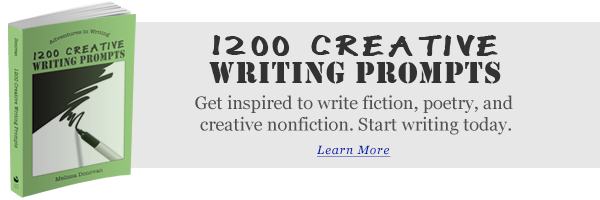
14 Comments
lovely prompts… really simple line or two that just strikes up imagery and let you freestyle all over it. Nice one
Thanks, Rory!
thanks for the good ideas good short story for someone in grade 8
Thanks. I just read through your list of prompts and got flashes of either beginnings or endings for stories from every one. I’ve not seen prmopts like these much on the web, so well done. Such a simple idea with so much power and potential. If only I had the day off to get cracking!
I love to create and use writing prompts, and I’m glad you found these to be useful. Thanks!
Hello. Supernatural or magic realism is pretty much all I write. I’ve got a prompt. ‘A young teenager is walking home during a storm and ends up getting struck by lightning. The next day they wake up to find that the accident turned them into an inhuman being.’ I’ve heard of this type of scenario before and I thought it would make for a great story. I love creating my own ideas of course but writing prompts are just fun challenge myself with and see what I can create out of already given ideas. I really like the prompts you give. As I said they are enjoyable to mess around with.
Thanks for sharing your prompt, Kristen. I agree that prompts are fun and can be challenging. I’m glad you like these. Keep writing!
#7 Woodland Clearing
Winter trees screen blue and sunny skies, Intense but icy light the heat belies. Spikey, naked, dormant maids and men Wait for the earth to turn around again.
And bring the warmth that touches every thread Of bark and twigs and all that acted dead Until the full-blown leaves create a wall Shortening the view until late fall
When sun and clouds break through the limbs again And show clear-cut those lacey maids and men Black for a time against the coldest air While waiting for the Spring to deck them fair
With leaves that seem to turn the world to green Creating hidden meadows only seen By animals and birds and mist and rains. For ages before calendars and trains.
Humanity intrudes in such a place And fools themselves that they have found a space Where they belong beneath the patchy light To rip and tear and exercise their might.
For meadow edges have no need to stand Between the woods and grassy, open land Where bugs and bears and buntings feel the sun. ‘Till people think they do what must be done.
April 27, 2019
Hi Jennifa. Thanks for sharing your lovely poem here.
That is a stunningly good poem, Jennifa. Far more worthy than just an obscure comment thread here. I hope you found a home for it where more eyes will see it. If you are published anywhere, I’d love to find out.
Wow. These are truly amazing prompts! Just a few lines of inspiration and now my mind is filled with creativity. Please come up with more! <3
You’ll find plenty more in the Writing Prompts Writing Prompts section of the Blog menu.
these are really helpful
Thanks, Flo! I’m glad you found them helpful.
Trackbacks/Pingbacks
- Readers & Writers United (wk 46 2010 overview) « Elsie Stills - [...] 12 Nature-Inspired Creative Writing Prompts (Stories – Tuesday 16 Nov.) [...]
- Writing Prompts: 37 Places to Find Them When You Need Inspiration - […] 12. 12 Nature-Inspired Creative Writing Prompts […]
- Here are three inspirational activities to elevate a writer's creativity - Judy Kundert - […] get an idea of how nature can inspire your creativity, try these Nature-Inspired Creative Writing Prompts from these 12…
Submit a Comment Cancel reply
Your email address will not be published. Required fields are marked *
This site uses Akismet to reduce spam. Learn how your comment data is processed .

Subscribe and get The Writer’s Creed graphic e-booklet, plus a weekly digest with the latest articles on writing, as well as special offers and exclusive content.
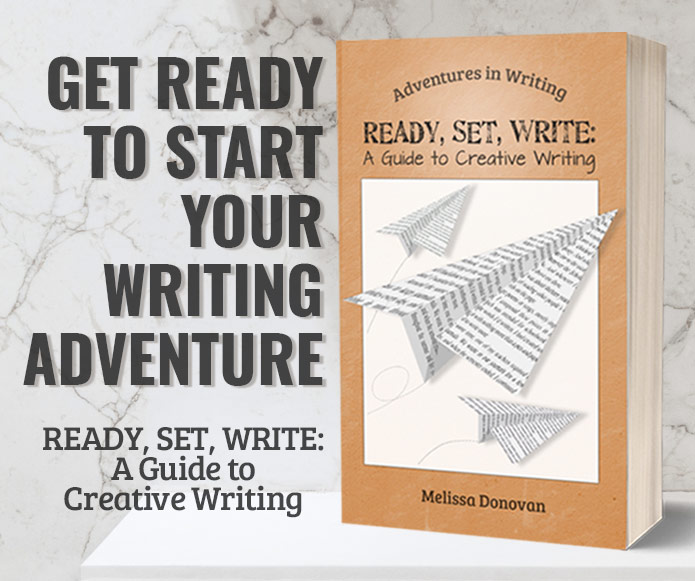
Recent Posts
- Punctuation Marks: How to Use a Semicolon
- Writing Memoirs
- Do You Need a Place to Write?
- 36 Tips for Writing Just About Anything
- A Handy Book for Poets – Poetry: Tools & Techniques: A Practical Guide to Writing Engaging Poetry
Write on, shine on!
Pin It on Pinterest
- Craft and Criticism
- Fiction and Poetry
- News and Culture
- Lit Hub Radio
- Reading Lists

- Literary Criticism
- Craft and Advice
- In Conversation
- On Translation
- Short Story
- From the Novel
- Bookstores and Libraries
- Film and TV
- Art and Photography
- Freeman’s
- The Virtual Book Channel
- Behind the Mic
- Beyond the Page
- The Cosmic Library
- The Critic and Her Publics
- Emergence Magazine
- Fiction/Non/Fiction
- First Draft: A Dialogue on Writing
- Future Fables
- The History of Literature
- I’m a Writer But
- Just the Right Book
- Lit Century
- The Literary Life with Mitchell Kaplan
- New Books Network
- Tor Presents: Voyage Into Genre
- Windham-Campbell Prizes Podcast
- Write-minded
- The Best of the Decade
- Best Reviewed Books
- BookMarks Daily Giveaway
- The Daily Thrill
- CrimeReads Daily Giveaway
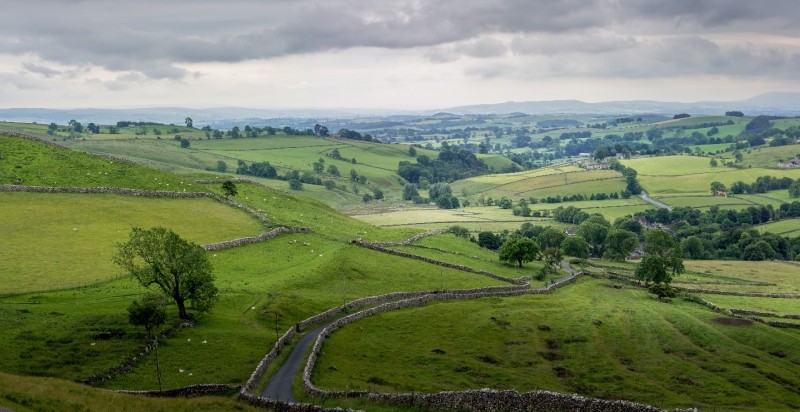
What Do You Get When You Cross the Contemporary Novel with Nature Writing?
Fiona williams on using every literary tool available to us.
So, what do you get when you cross the contemporary novel with nature writing? Over the past few years, I’ve watched this question being approached from many angles. First, there’s nature writing masquerading as prose. You know, the new literary genre of our times, where the writer skillfully leans hard-won scientific knowledge and real-life encounters of the natural world against a heartfelt, memoir-style backdrop.
Here, I’m thinking of accomplishments such as Kingbird Highway by Kenn Kaufman, The Grassling by Elizabeth-Jane Burnett, Thin Places by Kerri ni Dochartaigh, Helen Macdonald’s H is for Hawk , Robin Wall Kimmerer’s Braiding Sweetgrass , Amanda Thompson’s Belonging and Oddný Eir’s Land of Love and Ruins .
Then there’s eco-fiction, where the bitter pill of our failing relationship with our planet is cocooned within an adept body of work shaped like a novel—excellent examples I have encountered include Barkskins by Annie Proulx, The Wall by Marlen Haushofer, Ned Beauman’s Venomous Lumpsucker , Margaret Atwood’s dystopian Oryx and Crake , Arundhati Roy’s The God of Small Things , Ben Smith’s Doggerland , Pitchaya Sudbanthad’s Bangkok Wakes to Rain and Richard Powers’ vitally important The Overstory .
And then, there’s the angle I’m pushing. For what I’m interested in is the novel, first and foremost, but where the characters and their plot are underpinned by a fine-weave sewn from nature’s elements. My favorite contemporary examples of this entangled form include Waterland by Graham Swift, Daisy Johnson’s Everything Under , Jennifer Nansubuga’s The First Woman , Prodigal Summer by Barbara Kingsolver, How Much of These Hills Is Gold by C Pam Zhang, Irene Sola’s captivating When I Sing, Mountains Dance , Jesmyn Ward’s Salvage the Bones , Tan Twan Eng’s The Gift of Rain and Elif Sharaf’s The Island of Missing Trees .
There is no doubt that these novels are primarily focused on other, more decidedly urgent things—motherhood, feminism, war, migration, poverty, tragedy, marital crisis and family conflict—but very quickly, nature, in all its forms, rises up from the pages as an ever-present sub-character and plays an as important role in the narrative as the more familiar human themes of love, grief, friendship and betrayal.
I, too, am one of those writers who can’t resist calling on nature to help me build strong foundations upon which to explore the multifacetedness of the human condition. The House of Broken Bricks is set in a fictional village situated on the very real Somerset Levels in southwest England. This is a liminal space that despite ongoing modernization is constantly fighting to revert into ancient marshlands. Here the flora and fauna intrude into everyday living, whether it be through the ritual hunting of roe deer come autumn, the picking of ripe sloes for gin, the return of house martins every spring or the war against cabbage white caterpillars on the salad greens.
Like other writers who find inspiration in nature, I wanted to use it to contribute richness and depth to the story, and to amplify my characters’ emotions and expose the inner workings of their fragile identities. In the novel, young Max’s flightiness and inability to ground himself in reality was captured in feathers and a love of all things that fly, whether they be birds or insects. Whereas, his twin brother Sonny, whose wonder for life flows like the minnows in his beloved river, has his roots firmly planted beside the fossils and leatherjackets inhabiting the soil beneath their home.
For their mother Tess, her isolation as a Londoner of Jamaican heritage living in a rural part of Britain that sees few black people is framed by the bleakness of a floodplain, where leafless hawthorns are silhouetted in stark contrast against the pale setting of winter. And as a man of few words, her husband Richard must communicate his feelings through the growing of vegetables and the small, yet vital, ecosystem of the back garden. I found that nature was also an effective tool with which to generate seasonal atmosphere and to examine the connections between English and Jamaican culture.
Of course, the use of nature as a literary tool is not new. The natural world has always been a source of inspiration for writers. Both Dickens and Hardy—having evolved from the late 18th century’s Romanticism movement in which nature was given as equal importance in literature as religion—freely pillaged nature’s bounty and the landscape that was home to it. And it is important to remember that this attraction has historically been a global phenomenon and not solely confined to the wild moors of England.
If we look all the way back to the 11th-century Japanese classic The Tale of Genji by Murasaki Shikibu, one of our earliest novels, we will find intricate scenes depicting the beauty of nature woven into prose, history and poetry in order to showcase the botany and wildlife of the Heian era and, more interestingly, to enhance the complex emotional experiences of the novel’s extensive cast of characters. Fast forward to the present day and our affection for our natural surroundings as displayed in literature is no less important for, indeed, it has become part of the bedrock of our collective memories.
So, if I return to the original question—what do you get when you cross the contemporary novel with nature writing? Well, what you get is a reading experience that constitutes a free, and somewhat subconscious, pass to the most wondrous and amazing resource that we’ve ever had, and will ever have, access to.
Storytelling is one of our most valuable forms of human expression. So, if when focusing on a novel’s characters and the minutiae of their lives, there comes unbidden from the background a subtle, but persuasive, influx of nature-inspired imagery, wordplay, metaphor and symbolism, surely it cannot fail to leave a lasting impression. This quiet exposure is all the more necessary when we consider the increasing loss of natural species and spaces, and our diminishing connection to the natural world and how this impacts identity and belonging.
Biological and cultural diversity are inextricably linked, and our relationship with nature is inescapable—it’s what makes us human. If a novel is able to help strengthen and sustain this attachment, and enrich our understanding and appreciation, then I’m all for it. Encountering nature within fiction removes its abstractedness and forces us, as readers, to pay attention and become active partakers in exploration and contemplation, so that we see nature as part of ourselves and are more willing to accept ourselves as members of a wider community of living organisms.
__________________________________
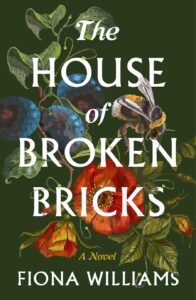
The House of Broken Bricks by Fiona Williams is available from Henry Holt and Co., an imprint of Macmillan, Inc.
- Share on Facebook (Opens in new window)
- Click to share on Twitter (Opens in new window)
- Click to share on Google+ (Opens in new window)
- Click to share on LinkedIn (Opens in new window)
- Click to share on Reddit (Opens in new window)
- Click to share on Tumblr (Opens in new window)
- Click to share on Pinterest (Opens in new window)
- Click to share on Pocket (Opens in new window)

Fiona Williams
Previous article, next article, support lit hub..

Join our community of readers.
to the Lithub Daily
Popular posts.
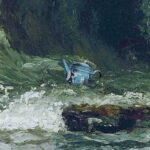
Follow us on Twitter
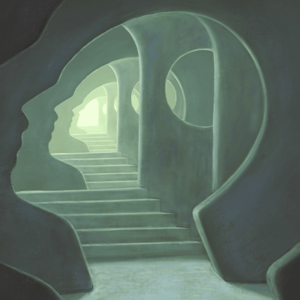

Information Overload: How Overthinking Feeds Our Innate Superstitions
- RSS - Posts
Literary Hub
Created by Grove Atlantic and Electric Literature
Sign Up For Our Newsletters
How to Pitch Lit Hub
Advertisers: Contact Us
Privacy Policy
Support Lit Hub - Become A Member
Become a Lit Hub Supporting Member : Because Books Matter
For the past decade, Literary Hub has brought you the best of the book world for free—no paywall. But our future relies on you. In return for a donation, you’ll get an ad-free reading experience , exclusive editors’ picks, book giveaways, and our coveted Joan Didion Lit Hub tote bag . Most importantly, you’ll keep independent book coverage alive and thriving on the internet.

Become a member for as low as $5/month
Cool Green Science
Stories of The Nature Conservancy
Novels for Nature Lovers
Fiction lovers take heart, you can have your great novel and nature too. Here are eight of our favorite picks.
Share this article
Share this:.

Here’s a pet peeve when reading a serious novel: the story goes into great detail on the woodgrain of the furniture, the clothing brands the characters wear, what music is playing in the background. But step outside, and birds appear that would not be found within 1,500 miles of the novel’s location.
Serious fiction has become inextricably associated with urbanity. And many novelists seemingly don’t even try to get nature right.
But there are fictions writers out there who write well, and passionately, about the natural world. Sometimes, we’d argue, their stories capture the essence of a place better than any non-fiction work ever could.
So here are eight of our favorites. Many of them are written by novelists who are also scientists or science writers, and they all get the details of wildlife and wild places right. We hope you enjoy them, and welcome your own picks in the comments section.
By Cormac McCarthy

A Pulitzer Prize winner, The Road tells the story of a father and son making their way across a United States now devoid of life, save for scattered bands of other people. Some of whom are cannibals.
Yeah, it’s bleak. But as with other McCarthy novels, the landscape plays a central role, and a yearning for nature – now lost – fills its pages. I used a passage as the epigraph for my own book on fishing; it’s one of the best descriptions of wild brook trout and the places they live. McCarthy gets his details right. He doesn’t waste a word. It is not surprising that he is now coaching scientists on how to write better journal articles . (MM)
The White Bone
By Barbara Gowdy
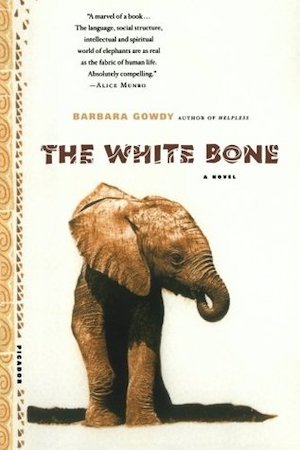
Mud and her elephant herd wander through a drought-stricken landscape, past the mutilated bodies of their kind. The rains are late, the dry land unfamiliar, and even memory itself begins to disintegrate. They search for the white bone, a mythical sacred object that will guide the elephants to a safe place, where water flows and the poachers cannot reach them.
Written from the perspective of a young female elephant, The White Bone is a masterpiece of imagination and cross-species empathy. Barbara Gowdy offers a window into the pain, suffering, and cultural collapse that African elephants are currently experiencing. The story may be fiction, but the heartbreak is real. (JEH)
The Breeding Season
By Amanda Neihaus
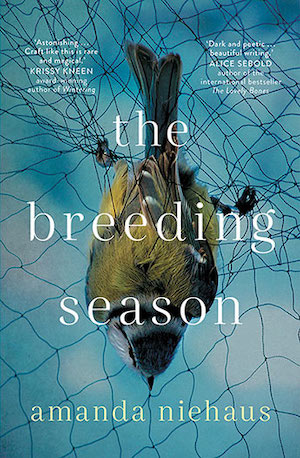
This story follows an Australian couple, Elise and Dan, as they attempt to reconnect in the wake of their baby’s death. Elise, an ecologist, punishes herself with grueling fieldwork trapping small mammals. Dan, a writer, grapples with his literary legacy and family trauma.
Though the obvious tragedy has already passed, another storm builds in the distance as the novel unfolds. Neihaus’s writing balances on the knife-edge between prose and poetry, with small phrases so beautiful that they catch you off-guard.
Though a work of fiction, her writing is founded in science. Neihaus is a trained ecologist who studies the reproduction of northern quolls, small Australian marsupials who quite literally copulate themselves to death. But she’s also a passionate science communicator who wants to reach a wider audience and use fiction to explore the intersection between sex and death, between art and science, and the complex power of human love. The result is dark, raw, and stunning. (JEH)
When the Killing’s Done
By TC Boyle
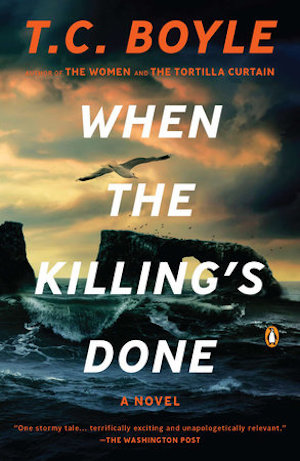
This novel is based loosely (very loosely) on a real conservation project in which The Nature Conservancy played a role: the removal of invasive pigs from California’s Channel Islands to allow the recovery of native wildlife. The plot centers on a national park biologist committed to recovering endemic island foxes and an animal rightist who wants to stop the killing of pigs at any cost.
The removal of invasive mammals often ignites passions and politics, and it provides rich grounds for a novelist of T.C. Boyle’s skill. He amps up the drama and violence, but also deftly shows the competing worldviews about the natural world and what species belong there. Fox biologists, pig killers, pig savers, ranchers and more converge in a tale of human values. Boyle raises often-difficult questions about the definition of “invasive” species. Many decisions are often based more on human values than on science. But the philosophy is just the background for a thrilling novel involving over-the-top personalities. (MM)
The Overstory
By Richard Powers
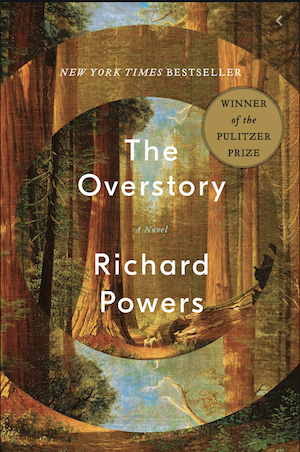
This Pulitzer-winning novel tells the story of nine strangers — connected by the power of trees — who join across time and space to fight against an environmental catastrophe.
An artist inherits a hundred years of portraits of the same American chestnut. A scientist with a hearing disability discovers that trees communicate with one another. A soldier fighting in the Vietnam War is saved when he falls from his aircraft into the bows of a banyan tree. A computer programmer sees a relationship between the genetic sequences of trees and his programming code.
Powers weaves together their stories — and the stories of the trees — across history and landscape, “in concentric rings of interlocking fables.” He manages to write about environmental catastrophe without veering into the gratuitously dystopian, and the novel is packed full of fascinating information about trees. (JEH)
Where the Crawdads Sing
By Delia Owens
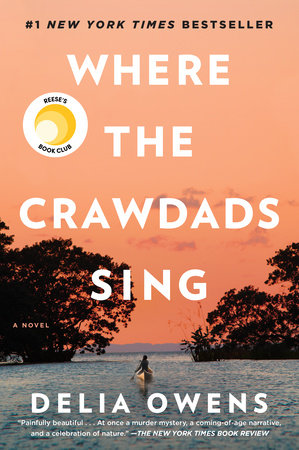
I’ve reviewed this book previously . But it’s worth mentioning again, because it’s a great novel that’s filled with excellent nature writing. It begins with a young woman living a semi-feral existence in coastal North Carolina. There is murder and romance and vivid characters. But there’s also wildlife and ecology and nature observation. Field guide illustrations play a central role throughout the story.
I’m heartened to see this book dominating various bestseller lists for the past year. It deserves it. And Delia Owens is pitch perfect in both capturing the spirit of a “swamp girl” and detailing the natural world that informs this girl’s world. Owens is a wildlife biologist who spent years with her husband in a remote tent, where they studied lions in very trying conditions (as detailed in their excellent book, Cry of the Kalahari ). If you love nature writing, or just a good mystery, you won’t want this one to end. (MM)
Tiger Country
By Stephen Bodio
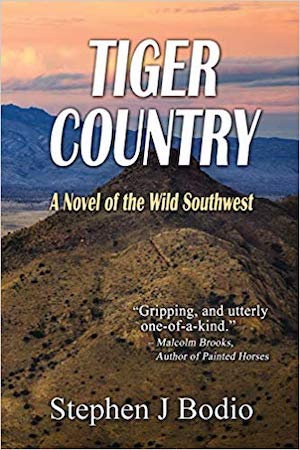
I read Stephen Bodio’s memoir Querencia more than 25 years ago. It was one of those books that expanded my world, with beautiful writing on topics that mattered to me. In my lifetime of book obsession, it remains my favorite. Bodio is known as a nature and outdoor writer, but he has read everything. His writing is informed by history, the classics, ranching culture, evolutionary biology and more.
In his first novel, he turns his attention to rewilding: the idea of bringing large predators back to landscapes where they’ve been eliminated. This is a love song to his beloved New Mexico, and involves a covert and illegal operation to bring back grizzly bears, jaguars and other large beasts to the Southwest. This is one of the more unusual takes on rewilding I’ve read (and I’ve read just about everything printed on the topic). There are not easy heroes or villains. There are stunning animals, domestic and wild. The protagonists eat and drink and discuss art and shoot things. The writing takes my breath away. Read this, then read everything else Bodio has written. (MM)
Go Down, Moses
By William Faulkner
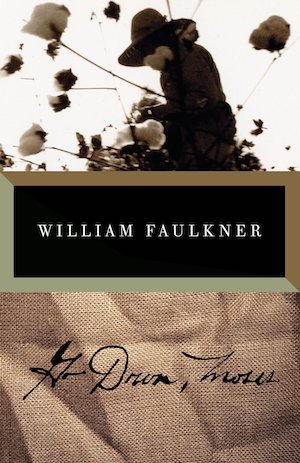
Yes, Faulkner.
Years ago, one of us spent an inordinate amount of time in college studying how classic southern writers incorporate nature into their stories. Faulkner is a master — weaving the southern landscape into his prose to the point that the land takes on a primal energy of its own, alongside the hunters and dogs that move through the gloomy woods and impenetrable stands of sugarcane.
If you read Faulkner in school and felt intimidated or overwhelmed, don’t worry. Go Down, Moses is less of a novel and more a collection of intertwined short stories. It’s still Faulkner, but it’s manageable. Fans of this book should also check out Faulkner’s Big Woods , another short story collection with more hunting stories. (JEH)
Join the Discussion
Join the discussion cancel reply.
Please note that all comments are moderated and may take some time to appear.
21 comments
Prodigal Summer (or anything by Barbara Kingsolver)
Yes, McCarthy is bleak, but have spent a lot of time in the land he writes about, and he does a good job of making it real. Will read a couple of your suggestions as they are unfamiliar to me.
Thank you for these fascinating reviews! I plan to read several of them, especially the Faulkner. Haven’t read Faulkner in many years, these sound good for renewing my acquaintance with him.
Continue Exploring

October 19, 2021
Story type: TNC Science Brief

Find anything you save across the site in your account
The Problem of Nature Writing
By Jonathan Franzen
The Bible is a foundational text in Western literature, ignored at an aspiring writer’s hazard, and when I was younger I had the ambition to read it cover to cover. After breezing through the early stories and slogging through the religious laws, which were at least of sociological interest, I chose to cut myself some slack with Kings and Chronicles, whose lists of patriarchs and their many sons seemed no more necessary to read than a phonebook. With judicious skimming, I made it to the end of Job. But then came the Psalms, and there my ambition foundered. Although a few of the Psalms are memorable (“The Lord is my shepherd”), in the main they’re incredibly repetitive. Again and again the refrain: Life is challenging but God is good. To enjoy the Psalms, to appreciate the nuances of devotion they register, you had to be a believer. You had to love God, which I didn’t. And so I set the book aside.
Only later, when I came to love birds, did I see that my problem with the Psalms hadn’t simply been my lack of belief. A deeper problem was their genre. From the joy I experience, daily, in seeing the goldfinches in my birdbath, or in hearing an agitated wren behind my back fence, I can imagine the joy that a believer finds in God. Joy can be as strong as Everclear or as mild as Coors Light, but it’s never not joy: a blossoming in the heart, a yes to the world, a yes to being alive in it. And so I would expect to be a person on whom a psalm to birds, a written celebration of their glory, has the same kind of effect that a Biblical psalm has on a believer. Both the psalm-writer and I experience the same joy, after all, and other bird-lovers report being delighted by ornithological lyricism; by books like J. A. Baker’s “ The Peregrine .” Many people I respect have urged “The Peregrine” on me. But every time I try to read it, I get mired in Baker’s survey of the landscape in which he studied peregrine falcons. Baker himself acknowledges the impediment—“Detailed descriptions of landscape are tedious”—while offering page after page of tediously detailed description. The book later becomes more readable, as Baker extolls the capabilities of peregrines and tries to understand what it’s like to be one. Even then, though, the main effect of his observations is to make me impatient to be outdoors myself, seeing falcons.
Sometimes I consider it a failing, a mark of writerly competition, that I’d so much rather take private joy in birds, and in nature generally, than read another person’s book about them. But I’m also mindful, as a writer, that we live in a world where nature is rapidly receding from everyday life. There’s an urgent need to interest nonbelievers in nature, to push them toward caring about what’s left of the nonhuman world, and I can’t help suspecting that they share my allergy to hymns of devotion. The power of the Bible, as a text, derives from its stories. If I were an evangelist, going door to door, I’d steer well clear of the Psalms. I would start with the facts as I saw them: God created the universe, we humans sin against His laws, and Jesus was dispatched to redeem us, with momentous consequences. Everyone, believer and nonbeliever alike, enjoys a good story. And so it seems to me that the first rule of evangelical nature writing should be: Tell one.
Almost all nature writing tells some kind of story. A writer ventures out to a lovely local wetland or to a pristine forest, experiences the beauty of it, perceives a difference in the way time passes, feels connected to a deeper history or a larger web of life, continues down the trail, sees an eagle, hears a loon: this is, technically, a narrative. If the writer then breaks a leg or is menaced by a grizzly bear with cubs, it may even turn into an interesting story. More typically, though, the narrative remains little more than a formality, an opportunity for reflection and description. A writer who’s moved to joy by nature, and who hopes to spread the joy to others, understandably wishes to convey the particulars of what incited it.
Unfortunately, no matter how felicitous the descriptions may be, the writer is competing with other media that a reader could be turning to instead, audiovisual media that actually show you the eagle or let you hear the loon. Ever since the advent of color photography and sound recording, lengthy descriptions have become problematic in all genres of writing, and they’re especially problematic for the evangelizing nature writer. To describe a scene of nature well, the writer is hard pressed to avoid terminology that’s foreign to readers who haven’t already witnessed a similar sort of scene. Being a birder, I know what a ruby-crowned kinglet sounds like; if you write that a kinglet is chattering in a willow tree, I can hear the sound clearly. The very words “ruby-crowned kinglet” are pregnant and exciting to me. I will avidly read an unadorned list of the species—black-headed grosbeak, lazuli bunting, blue-gray gnatcatcher—that a friend saw on her morning walk. To me, the list is a narrative in itself. To the unconverted reader, though, the list might as well say: Ira the son of Ikkesh of Tekoa, Abiezer of Anathoth, Mebunnai the Hushathite . . .
If birds are the writer’s focus, there do exist good stories about individual birds (the red-tailed hawks of Central Park) and individual species (the non-stop trans-Pacific flight of bar-tailed godwits), and I can tell, from the new-story links that nonbirding friends are forever forwarding to me, that reports of astonishing avian feats can overcome the public’s indifference to birds, at least momentarily. Whether such stories make converts—and I’ll say it here explicitly: my interest is in making converts—is less clear. The science of birds and their conservation should be interesting to anyone with a modicum of intellectual curiosity, but the world abounds with things to be curious about. The bird-science writer is painfully aware that he or she has only a few hundred words with which to hook a lay reader. One tempting approach to this challenge is to begin in medias res, by a campfire at some picturesque or desolate location, and introduce us to the Researcher. He will have a bushy beard and play the mandolin. Or she will have fallen in love with birds on her grandfather’s farm in Kentucky. He or she will be tough and obsessive, sometimes funny, always admirable. The danger with this approach is that, unless the Researcher emerges as the true subject of the piece, we readers may feel bait-and-switched—invited to believe that we’re reading a story about people, when in fact the story is about a bird. In which case, it’s fair to ask why we bothered getting to know the Researcher in the first place.
The paradox of nature writing is that, to succeed as evangelism, it can’t only be about nature. E. O. Wilson may have been correct in adducing biophilia—a love of nature—as a universal trait in human beings. To judge from the state of the planet, however, it’s a trait all too rarely expressed. What most often activates the trait is its display by people in whom it’s already activated. In my experience, if you ask a group of birders what got them into birds, four out of five of them will mention a parent, a teacher, a close friend, someone they had an intense personal connection with. But the faithful are few, the unpersuaded are many. To reach readers who are wholly wrapped up in their humanness, unawakened to the natural world, it’s not enough for writers to simply display their biophilia. The writing also needs to replicate the intensity of a personal relationship.
One of the forms this intensity can take is rhetorical. Speaking for myself, I’m a lot more likely to read an essay that begins “I hate nature” than one that begins “I love nature.” I would hope, of course, the writer doesn’t really hate nature, at least not entirely. But look at what the initial provocation accomplishes. Although it risks alienating the already persuaded, it opens the door to skeptical readers and establishes a connection with them. If the essay then reveals itself to be an argument for nature, the opening salvo also insures that the writing will be dynamic: will move from a point A to a very different point B. Movement like this is pleasurable to a reader. Fierce attitudes are pleasurable, even in the absence of forward movement. Give me the blistering prose of Joy Williams in “ The Killing Game ,” a jeremiad against hunters and their culture, or “ The Case Against Babies ,” as ferocious an anti-birth statement as you’ll ever read, in her perfectly titled collection “ Ill Nature .” Indifference, not active hostility, is the greatest threat to the natural world, and whether you consider Williams hilarious or unhinged, heroic or unfair, it’s impossible to be indifferent to her work. Or give me Edward Abbey’s “ Desert Solitaire ,” an account of his years in the Utah desert, in which he fans a simmering Thoreauvian misanthropy into white-hot fire and wields it against American consumer capitalism. Here again, you may not agree with the writer. You may wrinkle your nose at Abbey’s assumptions about “wilderness,” his unacknowledged privilege as a white American. What can’t be denied is the intensity of his attitude. It sharpens his descriptions of the desert landscape and gives them a forensic purpose, a cutting edge.
A good way to achieve a sense of purpose, strong movement from point A toward point B, is by having an argument to make. The very presence of a piece of writing leads us to expect an argument from it, if only an implicit argument for its existence. And, if the reader isn’t also offered an explicit argument, he or she may assign one to the piece, to fill the void. I confess to having had the curmudgeonly thought, while reading an account of someone’s visit to an exotic place like Borneo, that the conclusion to be drawn from it is that the writer has superior sensitivity to nature or superior luck in getting to go to such a place. This was surely not the intended argument. But avoiding the implication of “Admire me” or “Envy me” requires more attention to one’s tone of written voice than one might guess. Unlike the evangelist who rings doorbells and beatifically declares that he’s been saved, the tonally challenged nature writer can’t see the doors being shut in his face. But the doors are there, and unconverted readers are shutting them.
Often, by making an argument, you can sidestep the tonal problem. An essay collection that’s dear to me, “ Tropical Nature ,” by Adrian Forsyth and Ken Miyata, begins by serving up a set of facts about tropical rain forests. The facts are seemingly neutral, but they add up to a proposition: the rain forest is more varied, less fertile, less consistently rainy, more insidiously hostile, than the drenched and teeming “jungle” of popular imagination. It’s a very simple proposition. And yet, right away, there’s a case to be made in the ensuing essays—further expectations to be upended, new astonishments to be revealed. Wedded to an argument, the scientific facts speak far more compellingly to the glory of tropical nature than lyrical impressionism, and meanwhile Forsyth and Miyata, as neutral bringers of fact, remain immune to the suspicion of seeking admiration. The premise of Jennifer Ackerman’s best-selling “ The Genius of Birds ” is likewise simple and sturdy: that “bird-brained” ought to be a compliment, not an insult. Richard Prum’s 2017 book, “ The Evolution of Beauty ,” reached a wide audience by arguing that Darwin’s theory of sexual selection, which mainstream evolutionary biologists ignored or denigrated for more than a century, can explain all sorts of non-adaptive traits and behaviors in animals. Prum’s book has its flaws—the prose is gluey, and Darwin’s theory was perhaps not quite as forgotten as Prum represents it to have been—but the flaws didn’t matter to me. The theory of sexual selection was an eye-opener, and I learned a lot of cool things about a group of tropical birds, the manakins, that I otherwise might never have known. Such is the power of a compelling argument.
For the nature writer who isn’t a polemicist or a scientist, a third avenue to intensity is to tell a story in which the focus is on nature but the dramatic stakes are emphatically human. An exemplary book in this regard is Kenn Kaufman’s “ Kingbird Highway .” Kaufman grew up in suburban Kansas in the nineteen-sixties, became an obsessive birder (nicknamed Kingbird), and conceived the ambition, after he dropped out of high school, of breaking the record for the most American bird species seen in a calendar year. The record is quickly established as the dramatic goal, the protagonist’s coördinating desire. And then, immediately, we’re presented with an impediment: the teen-aged Kaufman has no money. To visit every corner of the country at the right time of year, a birder needs to cover huge distances, and Kaufman decides he’ll need to hitchhike. So now, in addition to a goal and an impediment, we have the promise of a classic road adventure. (It’s important to note that, just as we don’t have to be pedophiles to connect with Humbert’s pursuit of Lolita, we don’t need to care much about birds to be curious about what happens to Kaufman. Strong desire of any kind creates a sympathetic desire in the reader.) As Kaufman makes his way around the country, he’s attentive to the birds, of course, but also to the national mood of the early seventies, the social dynamics of bird-watching, the loss and degradation of natural habitat, the oddball characters along the way. And then the book takes a beautiful turn. As life on the road exacts its toll on the narrator, he feels increasingly lost and lonely. Although seemingly a quest narrative, the book reveals itself to have been, all along, a coming-of-age story. Because we care about the teen-aged Kaufman, we stop wondering if he’ll break the record and start asking more universally relatable questions: What’s going to happen to this young man? Is he going to find his way home? What sets “Kingbird Highway” apart from many other “Big Year” narratives is that it ultimately ceases to matter how many species Kaufman sees in a year. It’s only the birds themselves that matter. They come to feel like the home that he’s been yearning for, the home that will never leave him.
Even if we could know what it’s like to be a bird—and, pace J. A. Baker, I don’t think we ever really will—a bird is a creature of instinct, driven by desires that are the opposite of personal, incapable of ethical ambivalence or regret. For a wild animal, the dramatic stakes consist of survival and reproduction, full stop. This can make for fascinating science, but, absent heavy-duty anthropomorphizing or projection, a wild animal simply doesn’t have the particularity of self, defined by its history and its wishes for the future, on which good storytelling depends. With a wild-animal character, there is only ever a point A: the animal is what it is and was and always will be. For there to be a point B, a destination for a dramatic journey, only a human character will suffice. Narrative nature writing, at its most effective, places a person (often the author, writing in first person) in some kind of unresolved relationship with the natural world, provides the character with unanswered questions or an unattained goal, and then deploys universally shared emotions—hope, anger, longing, frustration, embarrassment, disappointment—to engage a reader in the journey. If the writing succeeds, it does so indirectly. We can’t make a reader care about nature. All we can do is tell strong stories of people who do care, and hope that the caring is contagious. ♦
This is drawn from “ Spark Birds .”
New Yorker Favorites
Searching for the cause of a catastrophic plane crash .
The man who spent forty-two years at the Beverly Hills Hotel pool .
Gloria Steinem’s life on the feminist frontier .
Where the Amish go on vacation .
How Colonel Sanders built his Kentucky-fried fortune .
What does procrastination tell us about ourselves ?
Fiction by Patricia Highsmith: “The Trouble with Mrs. Blynn, the Trouble with the World”
Sign up for our daily newsletter to receive the best stories from The New Yorker .
By signing up, you agree to our User Agreement and Privacy Policy & Cookie Statement . This site is protected by reCAPTCHA and the Google Privacy Policy and Terms of Service apply.

By Katy Waldman

By Deborah Treisman

By Vinson Cunningham

By Lauren Michele Jackson
Thank you for visiting nature.com. You are using a browser version with limited support for CSS. To obtain the best experience, we recommend you use a more up to date browser (or turn off compatibility mode in Internet Explorer). In the meantime, to ensure continued support, we are displaying the site without styles and JavaScript.
- View all journals
- Explore content
- About the journal
- Publish with us
- Sign up for alerts
- Published: 23 September 2015
Creative writing: A world of pure imagination
- Roberta Kwok 1
Nature volume 525 , pages 553–555 ( 2015 ) Cite this article
7536 Accesses
80 Altmetric
Metrics details
The creative process of writing science-inspired fiction can be rewarding — and the untapped niche is rich in opportunities for originality.
When Steve Caplan was a graduate student in the late 1990s, he accidentally inhaled a toxic chemical in his immunology laboratory, and had to spend ten days at home to recover. With little to do, he began to write a novel — he loved reading and had published some short stories, but hadn't yet had the time or mental space to produce longer work. He pounded out most of a rough draft about a scientist struggling to get tenure and coping with childhood memories of a parent with bipolar disorder.
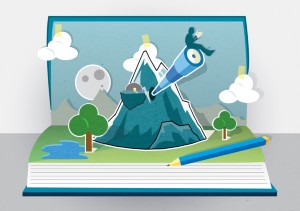
After going back to work, Caplan — now a cell biologist at the University of Nebraska Medical Center in Omaha — spent months revising the manuscript at night and on weekends. His initial attempts to sell the novel to a publisher failed, but in 2009, he decided to pursue the self-publishing route. Caplan produced print and electronic versions of his novel using the Amazon services CreateSpace and Kindle Direct Publishing, and publicized the work by doing readings at bookshops and libraries. He collaborated with his university's public-relations office on a press release, and showed a slide of the book at the end of his seminars. The novel, called Matter Over Mind (Steve Caplan, 2010), has sold more than 2,000 copies so far, netting roughly US$7,000. He has since written two more novels, which he published through small presses, and is now working on a fourth.
For many scientists who spend their days cranking out papers and grant proposals, writing fiction may seem like the last thing they would want to do. But some researchers with a love of literature have made time to pursue the craft — and have found it creatively rewarding. Science offers plenty of rich material, whether it is the drama of overwintering at a polar research station or the futuristic thrill of genetically engineering live organisms. “You're sitting on a gold mine of really interesting stories,” says Jennifer Rohn, a cell biologist at University College London and founder of LabLit.com , a website about portrayals of scientific research in fiction and other media.
A tantalizing niche
When done well, science-related fiction can help to expose the public to the scientific process, humanize researchers and inspire readers to learn about topics they might otherwise ignore. Such nuanced depictions of science in fiction are relatively rare. LabLit.com has catalogued about 200 examples of novels, such as Barbara Kingsolver's Flight Behavior (HarperCollins, 2012) and Ian McEwan's Solar (Random House, 2010), that feature realistic scientists as characters. Stories about scientists are well outnumbered by those about, for example, doctors or artists. Even science fiction tends to lack portrayals of the actual scientific process, says Alastair Reynolds, a science-fiction author near Cardiff, UK, who left a career in astronomy to write full-time.
The shortage of works with accurate depictions of science means that researchers who write fiction have a good opportunity to be original — a task that would challenge an aspiring crime or romance writer. “It's sort of untrampled ground,” says Rohn. Many researchers are familiar with fieldwork sites and unusual settings that other writers might not have at their fingertips. In her novel The Falling Sky (Freight Books, 2013), Pippa Goldschmidt, an astronomer turned fiction writer in Edinburgh, UK, writes about a young astronomer who wanders into a telescope dome on a Chilean mountaintop and is nearly injured when the operator moves the instrument.
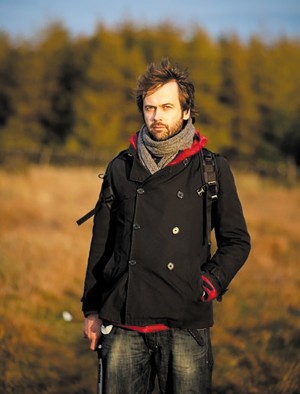
Sources of plot inspiration abound in science. Reynolds reads research news and papers voraciously for intriguing elements that can be parlayed into fiction. One time, he found a study about huge flocks of starlings in which the authors used high-tech equipment to track individual birds. He incorporated the idea into a science-fiction story, but made the fictional technology so advanced that it could track the birds' eye movements.
Scientists also can draw ideas from the past. Goldschmidt was inspired by an anecdote about physicist J. Robert Oppenheimer: during an unhappy period in the 1920s while studying abroad, Oppenheimer left a poisoned apple for his tutor. The details are sketchy, but Goldschmidt wanted to imagine what might have transpired. “No historical figure is ever completely understood,” she says. “There's always gaps in their lives, and fiction can inhabit those gaps.” The result was a short story entitled 'The Equation for an Apple', a fictionalized account of Oppenheimer's life leading up to the act.
Scientist–writers can also generate ideas by doing something they are already used to — sitting around and imagining scenarios, notes Andy Weir, a novelist in Mountain View, California. His novel The Martian (Crown, 2014) explores what might happen if a crewed Mars mission goes awry and one person is left behind on the red planet. The story follows the lone astronaut's trials as he tries to grow enough food for himself and to make contact with Earth.
Fiction-writing classes offered through adult-education programmes or at creative-writing centres can help authors to transfer an idea onto the page. These courses provide basic tips, such as how to construct compelling characters, build tension and handle shifts between past and present. Participants often critique each other's manuscripts, giving scientists a chance to get feedback from non-technical readers.
Reading widely and critically helps, too. Reynolds learnt to write fiction by studying the differences between his writing and that of successful authors. To work out how to rotate between different characters' points of view, he read James Ellroy's crime novel L.A. Confidential (Mysterious Press, 1990). And writers can learn how to structure dialogue from masters such as Jane Austen, he says.
Opening act
Short stories are a good starting point because newbies can quickly practise the basics, explore story ideas and learn from their mistakes. But, Goldschmidt notes, “there's no point in writing short stories if you don't like reading them”. Scientists who want motivation to complete a longer work might consider participating in National Novel Writing Month, an international programme held every November that encourages writers of all levels to produce a 50,000-word manuscript (see nanowrimo.org ). Researchers can also find support through collaboration with professional writers on works of fiction (see 'Meeting of the minds').
boxed-text Researcher–writers should keep in mind that education is not the main purpose of fiction. Technical details should be included only if the reader needs them to understand the story, not simply because the author finds them fascinating. For The Martian , Weir went to great lengths to ensure accuracy, and even performed orbital-dynamics calculations. But he left out how he came up with certain numbers, such as the mass that had to be removed from the ship to achieve escape velocity.
When technical information is necessary, writers should try to deliver it in a way that sounds natural. “People don't tell each other a whole bunch of information about particle physics when they're having breakfast together,” says Goldschmidt. Instead, she tries to make the science an organic part of the character's personal journey. In the Oppenheimer story, the physicist thinks about an experiment that he is trying to replicate, but the details are woven into his emotional turmoil at failing to complete it.
Humour can help to lighten the tone. The Martian 's protagonist is a smart-aleck, and his jokes break up the expository text. In one section, he says that if he were exposed to damaging solar radiation, he would “get so much cancer, the cancer would have cancer”.
The path to press
Many outlets accept short-story submissions. LabLit.com often publishes fiction by scientists, although it does not pay them because it is a volunteer effort. Nature runs an 850- to 950-word science-fiction story each week (see nature.com/futures ). The website Duotrope.com offers a searchable database of literary journals and other fiction markets around the world, and writers can peruse newsstands for sci-fi magazines such as Analog Science Fiction and Fact .
For longer works, small presses are a more-realistic option than major publishers, and many do not require writers to have agents. Tasneem Zehra Husain, a theoretical physicist and writer in Cambridge, Massachusetts, wrote a novel that revisits physics breakthroughs throughout history from the perspectives of fictional characters. Through an acquaintance, she connected with the publisher Paul Dry Books in Philadelphia, Pennsylvania, which released her book Only the Longest Threads last year. To find small presses, scientists can look for companies that have published similar books. Alternatively, authors could self-publish using a service such as Lulu.
Many literary journals do not pay at all, and Reynolds estimates that science-fiction magazines have paid him an average of only US$200–300 per story. But the contacts that Reynolds made through short-story publishing led to a book deal, and he published four novels while working as an astronomer. By the time he quit science to become a full-time writer, he was making about $60,000–$75,000 per year from book sales.
The write balance
Few scientists can expect to make a living — or earn much — from their fiction. But money often isn't the main motivation. Caplan, for his part, wanted to bring attention to the challenges faced by the family members of people with bipolar disorder (challenges he himself has experienced) and to provide entertainment for scientists. He also finds that writing fiction clears his head, in the same way that playing a sport might do for others (see Nature 523 , 117–119; 2015). “It's almost like a form of meditation,” says Caplan. “It just keeps me sane.” And there are other rewards. Scientists have a chance to reach people who might not read a non-fiction science book or visit a natural-history museum — but who might read a love story about ecologists in an exotic field location. And readers might be inspired to look up the science once they've finished.
Scientists have a chance to reach people who might not read a non-fiction science book or visit a museum.
There can also be a cross-training effect. Rohn thinks that her fiction has helped her to get more grants; reviewers have commented that her proposals are beautifully written. The craft of telling a story applies to scientific papers as well; in hers, for example, she lays out the phenomenon that her team noticed, the questions it raised and what they did to try to answer those questions. “Everybody wants to hear a story,” she says.
Finding the time to write is a challenge. Some scientists squeeze it in on evenings and weekends. Husain wrote her book while working part-time, and says that she could not have done so with a full-time job because the novel required extensive historical research.
Scientist–authors also risk having their fiction perceived as a distraction by promotion committees. Husain worried that her novel might affect her career prospects. But she has received positive feedback on the book from other physicists, including prominent researchers whose fields are described in her book.
For researchers who delve into fiction writing, the act of creating a world, characters and stories can be intensely rewarding. When the writing is flowing, says Rohn, “it's like being caught up in the best book you've ever read”.
Box 1: Meeting of the minds
Scientists who are too daunted or busy to write fiction can pair up with a professional writer. Comma Press in Manchester, UK, for example, has published four short-story anthologies — a fifth comes out this October — as part of its 'Science-into-Fiction' series. Each scientist suggests a few research items or emerging technologies for inspiration, and a writer chooses one to develop into fiction. The researcher provides technical guidance, reviews the draft and writes an afterword explaining the science in detail.
The partnership is satisfying because scientists see their work portrayed in a real-world context, and the writer can raise social or ethical implications that the researcher may not have considered, says Ra Page, who founded Comma Press. One scientist studied how nanotechnology could improve body armour, which could have military applications. The writer penned 'Without a Shell', a tale of a futuristic society in which children at an elite school have 'smart' uniforms that heal their injuries, while kids at a poor school do not. Comma Press included the work in its 2009 anthology, When It Changed . An upcoming collection will focus on fabrication technology, such as 3D printers; interested researchers can contact Page to take part.
Scientists also can offer to answer questions from fiction writers through the Science and Entertainment Exchange, run by the US National Academy of Sciences in Washington DC. For instance, a novelist might want to know what types of equipment a researcher would carry in the field. Scientists can call 844-NEEDSCI (toll-free in the United States) to volunteer (see go.nature.com/e6juh9 for more).
Researchers can also partner with faculty members in their universities' creative-writing departments, suggests Page. Authors do not need experience writing about science, but it helps if they have been commissioned to write about specific topics before. When collaborating, “allow the writer to make silly suggestions”, says Page. An idea that at first seems impossible may be plausible after further thought.
Author information
Authors and affiliations.
Roberta Kwok is a freelance writer in Seattle, Washington.,
Roberta Kwok
You can also search for this author in PubMed Google Scholar
Related links
Related links in nature research.
More lab in the library
Experimental fiction
Quantified: Futures
Where might it lead?
Q&A: David Brin on writing fiction
Nature blogpost: How to write for Nature Futures
Nature blogpost: Transitions — combining science and novel writing
Nature blogpost: More bang for your book
Nature blogpost: Plotting a role for scientists in fiction
Related external links
Steve Caplan
Pippa Goldschmidt
Alastair Reynolds
Tasneem Zehra Husain
Comma Press's 'Science-into-Fiction' series
Rights and permissions
Reprints and permissions
About this article
Cite this article.
Kwok, R. Creative writing: A world of pure imagination. Nature 525 , 553–555 (2015). https://doi.org/10.1038/nj7570-553a
Download citation
Published : 23 September 2015
Issue Date : 24 September 2015
DOI : https://doi.org/10.1038/nj7570-553a
Share this article
Anyone you share the following link with will be able to read this content:
Sorry, a shareable link is not currently available for this article.
Provided by the Springer Nature SharedIt content-sharing initiative
Quick links
- Explore articles by subject
- Guide to authors
- Editorial policies
Sign up for the Nature Briefing newsletter — what matters in science, free to your inbox daily.

SHORT STORIES .NET
Short stories for kids.
KAREN´S TULIP GARDEN
Short Story for Kids written by: Carolina Mora Arévalo.
Karen went for a walk in a beautiful garden , full of tulips and butterflies . The little girl loved nature and always enjoyed the fresh wind blowing through her hair.
She ran from one side to the other, taking care not to damage the flowers in the beautiful garden.
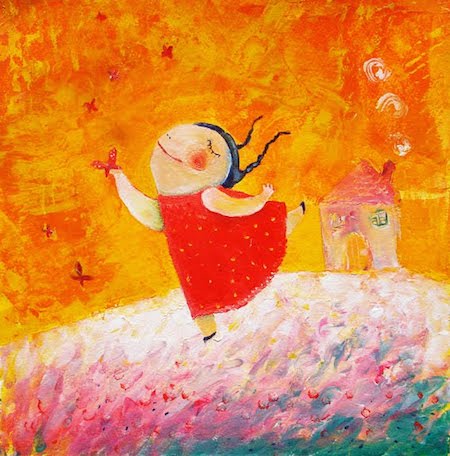
Suddenly, behind a big bush, she found a swing made from tree branches. Karen Did not hesitate for a second and jumped onto the swing , and began swinging so the wind dishevelled her hair.
Continue reading…
- Children's stories ; Nature stories ; Short stories for kids ; Tales about ecology ;
- No Comments
GENEROUS FATTY (SECOND PART)
Short Story for Kids written by: Carlos Cebrian González.
Click here to read: GENEROUS FATTY (FIRST PART)
…Lolo reluctantly went to the seed shop and bought seeds. He explained the project to his parents during dinner and ate only a plate of soup and a piece of omelette with chips. His parents, Josh and Sarah were suprised to see their son so very different from lunch time. Was their son sick?”

On Saturday morning, Lolo went to his parents vegetable garden and took the tools that his dad, Josh, lent him. He made different holes to put the seeds in and gave his lunch to the birds flying around, giving them the crumbs from his bread and olive oil.
- Children's stories ; Fairy tales ; Moral values ; Nature stories ;
SLEEPY MOON (FIRST PART)
New Short Story for Children written by: Rosa Maria Martin – Moreno Navarro.
Mathew was a kid living in a small town beside small mountains. He liked to watch the sky every night, searching for the moon to watch it and admire it.
Sometimes he looked at her so much that his eyes were hurting, and used to end up falling asleep on the edge of the window.
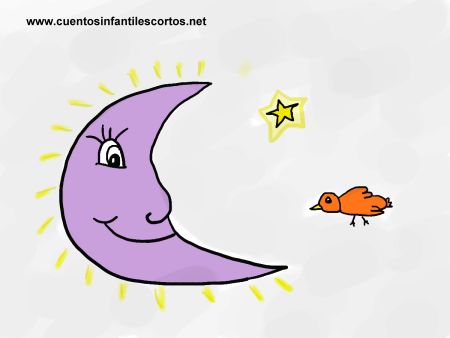
His mother worked in a bakery , and sometimes made a small white and rounded bread, with two eyes and a smiling mouth to give it to her son saying:
– “Here Mathew I brought you a little moon”.
- Children's stories ; Moral values ; Nature stories ;
THE WORRIED MANGO
Short story written by: Ruderico Diaz (Venezuela)
From a beautiful flower, yellow like the sun, was born a beautiful green fruit named mango .
He was growing on a tree and his colour was slowly changing.
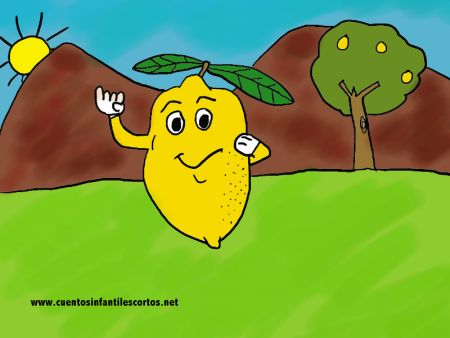
- Characters and environments ; Nature stories ; Optimism stories ; Short stories for kids ;
WILLY THE STUTTERER BEAR
Willy the bear lived in a beautiful place in the middle of a mountain range full of green fields that nobody knew about.
He was very lucky, as this beautiful place was all for him, and he could eat everything he wanted, so actually he was a very big bear.
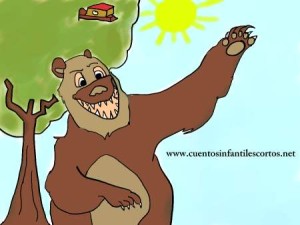
One day when he woke up found out something devastating. Some of the trees had died!
“What has happened to you?”- said Willy with tears in his eyes. Continue reading…
- Animal stories ; Bravery stories ; Moral values ; Nature stories ; Tales about ecology ; Tales about effort ;
PETER AND THE COCONUT
Once upon a time there was a woodpecker called Peter who lived in a big jungle full of trees including coconut palms .
Peter really liked coconut palms because of their big leaves and of course, because of their fruit: The coconut.
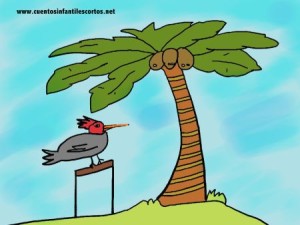
Peter discovered coconuts thanks to a monkey that had thrown a coconut down to the ground which had broken into two pieces. Peter approached the coconut to see what was inside… Continue reading…
- Animal stories ; Characters and environments ; Nature stories ; Short stories for kids ; Tales about effort ;
ELMY AND THE AUTUMN
Every year in October, when autumn arrives Elmy gets very sad and stops smiling.
Elmy was a young perishable tree who loved having fun and joking with the other trees in the park where he lived. But every year when autumn arrived, Elmy’s leaves started to fall and he became sad .
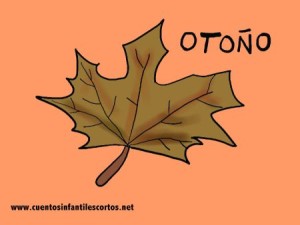
One day one of his friends decided to throw him a surprise party to cheer him up. Soon, everything was ready for the party. Continue reading…
- Characters and environments ; Nature stories ; Short stories for kids ; Tales about ecology ; Tales about understanding ;
THE MOON AND THE BIRD
In Space where the stars shine exist planets, and some smaller spheres that rotate around those planets. These spheres are called satellites.
The protagonist of this story is a satellite that rotates around planet Earth, and is called “The Moon”.
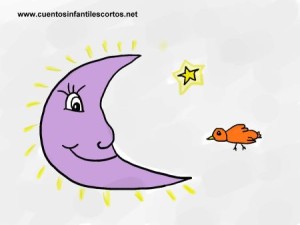
The moon is a big sphere , that used to be very arrogant and vain. She thought that she was the only moon in the universe , and she always thought: “I am the best! The only one chosen by the universe to exist!”. Continue reading…
- Characters and environments ; Nature stories ; Short stories for kids ; Tales about humility ;
THE MAGIC RIVER
In faraway mountains there was a magic river that turned everything near him into life.
The Stones rolling down from the road above were transformed into a huge trees next to the river.The broken branches that fell into the river turned into beautiful fish.
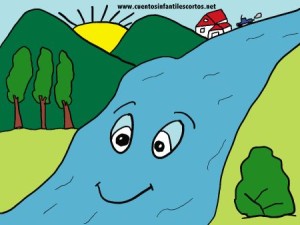
Nearby the mountains there was a village where the citizens used cars to move from one place to another instead of walking. They didn’t realise what would happen if they used the car all the time. Continue reading…
- Characters and environments ; Moral values ; Nature stories ; Tales about ecology ;
JOSHI RABBIT
In a faraway valley lived a family of owls . The parents were Julia and Josh and they had two children, Peter and Joshi.

Peter and Joshi got along very well. They were always playing, flying around the forest and hunting mice together.
One day Peter and Joshi went to hunt snakes with their parents Julia and Josh. When they were near the area where the snakes lived their father advised them: “Now you have to be really quiet and move stealthily”. Continue reading…
- Animal stories ; Characters and environments ; Nature stories ; Parents stories ; Short stories for kids ; Tales about effort ;
We are using cookies for ads personalisation and to give you the best experience on our website.
You can find out more about which cookies we are using or switch them off in settings . More info: Privacy Policy .

Privacy Overview
3rd party cookies.
This website uses cookies for ads personalisation, and so that we can provide you with the best user experience possible. Cookie information is stored in your browser and performs functions such as recognising you when you return to our website and helping our team to understand which sections of the website you find most interesting and useful.
You can know about how Google will use your personal data, here: https://policies.google.com/technologies/partner-sites
You can adjust all of your cookie settings by navigating the tabs on the left hand side.
More info: Privacy Policy
This website uses Google Analytics to collect anonymous information such as the number of visitors to the site, and the most popular pages.
Keeping this cookie enabled helps us to improve our website.
Please enable Strictly Necessary Cookies first so that we can save your preferences!

Mali's junta suspends political party activities until further notice
B AMAKO (Reuters) - Mali's junta has issued a decree halting political party activities, government spokesperson Abdoulaye Maiga announced in a statement read on state television on Wednesday evening.
The decree suspends until further notice all activities by political parties and "associations of a political nature" on the grounds of maintaining public order, the statement said.
Mali has been under military rule since August 2020, the first of eight coups in West and Central Africa over four years, including in its neighbours Burkina Faso and Niger.
Mali's current junta seized power in a second coup in 2021 and later promised to restore civilian rule by March 26, 2024 following elections in February of this year.
However, the junta said in September last year that it would indefinitely postpone February elections for technical reasons, sparking outrage among political groups.
Many reacted again after last month's transition deadline passed without a vote, with some of Mali's main political parties and civil society groups on March 31 calling for a time frame for elections.
"We will use all legal and legitimate avenues for the return of normal constitutional order in our country," they said in a joint statement that had over 20 signatories, including a major opposition coalition and the toppled ex-president's party.
Mali's military rulers already broke a first promise to hold elections in February 2022.
(Reporting by Tiemoko Diallo; Writing by Portia Crowe; Editing by Marguerita Choy)

- International edition
- Australia edition
- Europe edition

C’mon kids! Here’s your chance to get published in the Guardian
Our nature series Young Country Diary is looking for pieces written by children about their spring wildlife adventures
**This callout for spring pieces is now closed, it will reopen on Saturday 1 June for summer pieces, and remain open throughout June**
Once again, the Young Country Diary series is open for submissions! Every three months, as the UK enters a new season, we ask you to send us a piece written by a child aged 8-14.
The article needs to be about a recent encounter they’ve had with nature – whether it’s a woodland walk, some nesting birds or a thriving rockpool.
Crucially, it doesn’t matter if the child is a nature expert or has never picked up a pair of binoculars. We are especially keen to reach teachers who might like to get their class outside and noticing nature.
Please note the deadline for entry is Monday 1 April at 23:59 .
Six winning entries will be chosen, and published in the Guardian newspaper and online – two on 23 March, two on 27 April and two on 25 May. On 1 June we’ll launch a fresh callout looking for summer pieces.
Note that if you send your piece in early enough, you stand a chance of being published on 23 March.
How your child can take part
First of all, we’re looking for children age 8 to 14, so we will need your permission, as parent or guardian. Then here’s what the child needs to do:
Step 1 – Go out one day to where there is some nature. It could be their local woods or beach, their garden, a farm, or simply the nearest park.
Step 2 – Write an article of 200-250 words telling us what they saw and what happened .
Step 3 – Send the article to us using the form below. We ask that you fill in the form yourself rather than the child.
Photos/drawings – These are helpful (especially landscape rather than portrait) but they are not a condition of entry. If you have some, please tell us in the “more information” field, as there’s no way to attach them to the form.

Hints and tips for any budding YCD writers
If the child gets stuck and doesn’t know what to write about, here are a few pointers:
Good nature writing starts with the senses – so what did you see and hear? What about smell and touch? Take notes when you’re out and about so you don’t forget
How would you describe what happened? Did it remind you of anything?
It’s great to look up some extra information about what you saw, and tell us about that too. For example, if you find an interesting-looking bug, see if you can find out what type of butterfly it was, how long they live – any juicy titbits!
You can think big, and describe the whole scene – the sky, the horizon, the landscape. Or you can think small, and tell us some details about the butterfly’s wings or the beetle’s markings.
What did your encounter with nature make you think about? How did it make you feel?
The deadline for entry is 23:59 on Monday 1 April . Anyone can enter their child who is aged between 8 and 14 and based in the UK . You the parent/guardian will be contacted if your child’s piece is selected for publication, and you will be paid on behalf of the child.
For further inspiration, here are a few recent Young Country Diaries: Hayden, 10, on a busy badger sett Aisha, 12, on a well-camouflaged bird Scarlet, 11, on the swallows in her garage
Good luck, everyone!
Paul Fleckney, editor of Young Country Diary and Country Diary
We ask that the parent/guardian fills in the form below, rather than your child. Your responses are secure as the form is encrypted and only the Guardian has access to your contributions. One of our journalists will be in contact with you, as parent or guardian, before we publish, so please do leave contact details.
This callout is closed.
- Young country diary
- Conservation
Most viewed
25 Questions (and Answers!) About the Great North American Eclipse
The McDonald Observatory’s guide to one of nature’s most beautiful and astounding events: What you might see, how to view it safely, how astronomers will study it, how animals might react, and some of the mythology and superstitions about the Sun’s great disappearing act.
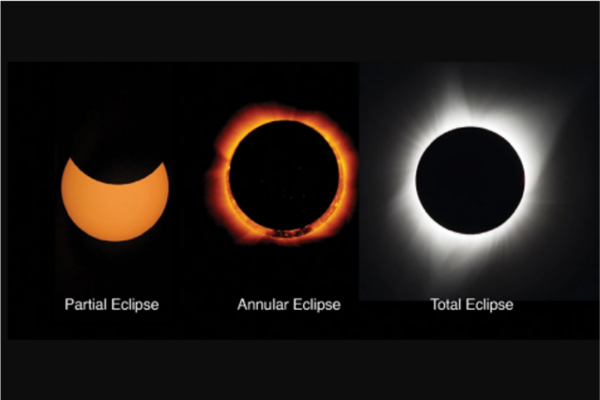
1. What’s happening?
The Moon will cross directly between Earth and the Sun, temporarily blocking the Sun from view along a narrow path across Mexico, the United States, and Canada. Viewers across the rest of the United States will see a partial eclipse, with the Moon covering only part of the Sun’s disk.
2. When will it happen?
The eclipse takes place on April 8. It will get underway at 10:42 a.m. CDT, when the Moon’s shadow first touches Earth’s surface, creating a partial eclipse. The Big Show—totality—begins at about 11:39 a.m., over the south-central Pacific Ocean. The shadow will first touch North America an hour and a half later, on the Pacific coast of Mexico. Moving at more than 1,600 miles (2,575 km) per hour, the path of totality will enter the United States at Eagle Pass, Texas, at 1:27 p.m. CDT. The lunar shadow will exit the United States and enter the Canadian province of New Brunswick near Houlton, Maine, at 2:35 p.m. (3:35 p.m. EDT).
3. How long will totality last?
The exact timing depends on your location. The maximum length is 4 minutes, 27 seconds near Torreon, Mexico. In the United States, several towns in southwestern Texas will see 4 minutes, 24 seconds of totality. The closer a location is to the centerline of the path of totality, the longer the eclipse will last.
4. What will it look like?
Eclipse veterans say there’s nothing quite like a total solar eclipse. In the last moments before the Sun disappears behind the Moon, bits of sunlight filter through the lunar mountains and canyons, forming bright points of light known as Baily’s beads. The last of the beads provides a brief blaze known as a diamond ring effect. When it fades away, the sky turns dark and the corona comes into view— million-degree plasma expelled from the Sun’s surface. It forms silvery filaments that radiate away from the Sun. Solar prominences, which are fountains of gas from the surface, form smaller, redder streamers on the rim of the Sun’s disk.
5. What safety precautions do I need to take?
It’s perfectly safe to look at the total phase of the eclipse with your eyes alone. In fact, experts say it’s the best way to enjoy the spectacle. The corona, which surrounds the intervening Moon with silvery tendrils of light, is only about as bright as a full Moon.
During the partial phases of the eclipse, however, including the final moments before and first moments after totality, your eyes need protection from the Sun’s blinding light. Even a 99-percent-eclipsed Sun is thousands of times brighter than a full Moon, so even a tiny sliver of direct sunlight can be dangerous!
To stay safe, use commercially available eclipse viewers, which can look like eyeglasses or can be embedded in a flat sheet that you hold in front of your face. Make sure your viewer meets the proper safety standards, and inspect it before you use it to make sure there are no scratches to let in unfiltered sunlight.
You also can view the eclipse through a piece of welder’s glass (No. 14 or darker), or stand under a leafy tree and look at the ground; the gaps between leaves act as lenses, projecting a view of the eclipse on the ground. With an especially leafy tree you can see hundreds of images of the eclipse at once. (You can also use a colander or similar piece of gear to create the same effect.)
One final mode of eclipse watching is with a pinhole camera. You can make one by poking a small hole in an index card, file folder, or piece of stiff cardboard. Let the Sun shine through the hole onto the ground or a piece of paper, but don’t look at the Sun through the hole! The hole projects an image of the eclipsed Sun, allowing you to follow the entire sequence, from the moment of first contact through the Moon’s disappearance hours later.
6. Where can I see the eclipse?
In the United States, the path of totality will extend from Eagle Pass, Texas, to Houlton, Maine. It will cross 15 states: Texas, Oklahoma, Arkansas, Missouri, Illinois, Indiana, Kentucky, Ohio, Pennsylvania, New York, Vermont, New Hampshire, Maine, Tennessee, and Michigan (although it barely nicks the last two).
In Texas, the eclipse will darken the sky over Austin, Waco, and Dallas—the most populous city in the path, where totality (the period when the Sun is totally eclipsed) will last 3 minutes, 51 seconds.
Other large cities along the path include Little Rock; Indianapolis; Dayton, Toledo, and Cleveland, Ohio; Erie, Pennsylvania; Buffalo and Rochester, New York; and Burlington, Vermont.
Outside the path of totality, American skywatchers will see a partial eclipse, in which the Sun covers only part of the Sun’s disk. The sky will grow dusky and the air will get cooler, but the partially eclipsed Sun is still too bright to look at without proper eye protection. The closer to the path of totality, the greater the extent of the eclipse. From Memphis and Nashville, for example, the Moon will cover more than 95 percent of the Sun’s disk. From Denver and Phoenix, it’s about 65 percent. And for the unlucky skywatchers in Seattle, far to the northwest of the eclipse centerline, it’s a meager 20 percent.
The total eclipse path also crosses Mexico, from the Pacific coast, at Mazatlán, to the Texas border. It also crosses a small portion of Canada, barely including Hamilton, Ontario. Eclipse Details for Locations Around the United States • aa.usno.navy.mil/data/Eclipse2024 • eclipse.aas.org • GreatAmericanEclipse.com
7. What causes solar eclipses?
These awe-inspiring spectacles are the result of a pleasant celestial coincidence: The Sun and Moon appear almost exactly the same size in Earth’s sky. The Sun is actually about 400 times wider than the Moon but it’s also about 400 times farther, so when the new Moon passes directly between Earth and the Sun—an alignment known as syzygy—it can cover the Sun’s disk, blocking it from view.
8. Why don’t we see an eclipse at every new Moon?
The Moon’s orbit around Earth is tilted a bit with respect to the Sun’s path across the sky, known as the ecliptic. Because of that angle, the Moon passes north or south of the Sun most months, so there’s no eclipse. When the geometry is just right, however, the Moon casts its shadow on Earth’s surface, creating a solar eclipse. Not all eclipses are total. The Moon’s distance from Earth varies a bit, as does Earth’s distance from the Sun. If the Moon passes directly between Earth and the Sun when the Moon is at its farthest, we see an annular eclipse, in which a ring of sunlight encircles the Moon. Regardless of the distance, if the SunMoon-Earth alignment is off by a small amount, the Moon can cover only a portion of the Sun’s disk, creating a partial eclipse.
9. How often do solar eclipses happen?
Earth sees as least two solar eclipses per year, and, rarely, as many as five. Only three eclipses per two years are total. In addition, total eclipses are visible only along narrow paths. According to Belgian astronomer Jean Meuss, who specializes in calculating such things, any given place on Earth will see a total solar eclipse, on average, once every 375 years. That number is averaged over many centuries, so the exact gap varies. It might be centuries between succeeding eclipses, or it might be only a few years. A small region of Illinois, Missouri, and Kentucky, close to the southeast of St. Louis, for example, saw the total eclipse of 2017 and will experience this year’s eclipse as well. Overall, though, you don’t want to wait for a total eclipse to come to you. If you have a chance to travel to an eclipse path, take it!
10. What is the limit for the length of totality?
Astronomers have calculated the length of totality for eclipses thousands of years into the future. Their calculations show that the greatest extent of totality will come during the eclipse of July 16, 2186, at 7 minutes, 29 seconds, in the Atlantic Ocean, near the coast of South America. The eclipse will occur when the Moon is near its closest point to Earth, so it appears largest in the sky, and Earth is near its farthest point from the Sun, so the Sun appears smaller than average. That eclipse, by the way, belongs to the same Saros cycle as this year’s.
11. When will the next total eclipse be seen from the United States?
The next total eclipse visible from anywhere in the United States will take place on March 30, 2033, across Alaska. On August 22, 2044, a total eclipse will be visible across parts of Montana, North Dakota, and South Dakota. The next eclipse to cross the entire country will take place on August 12, 2045, streaking from northern California to southern Florida. Here are the other total solar eclipses visible from the contiguous U.S. this century:
March 30, 2052 Florida, Georgia, tip of South Carolina May 11, 2078 From Louisiana to North Carolina May 1, 2079 From Philadelphia up the Atlantic coast to Maine September 14, 2099 From North Dakota to the Virginia-North Carolina border
12. What is the origin of the word ‘eclipse?’
The word first appeared in English writings in the late 13th century. It traces its roots, however, to the Greek words “ecleipsis” or “ekleipein.” According to various sources, the meaning was “to leave out, fail to appear,” “a failing, forsaking,” or “abandon, cease, die.”
13. Do solar eclipses follow any kind of pattern?
The Moon goes through several cycles. The best known is its 29.5-day cycle of phases, from new through full and back again. Other cycles include its distance from Earth (which varies by about 30,000 miles (50,000 km) over 27.5 days) and its relationship to the Sun’s path across the sky, known as the ecliptic (27.2 days), among others. These three cycles overlap every 6,585.3 days, which is 18 years, 11 days, and 8 hours.
This cycle of cycles is known as a Saros (a word created by Babylonians). The circumstances for each succeeding eclipse in a Saros are similar—the Moon is about the same distance from Earth, for example, and they occur at the same time of year. Each eclipse occurs one-third of the way around Earth from the previous one, however; the next eclipse in this Saros, for example, will be visible from parts of the Pacific Ocean.
Each Saros begins with a partial eclipse. A portion of the Moon just nips the northern edge of the Sun, for example, blocking only a fraction of the Sun’s light. With each succeeding eclipse in the cycle, the Moon covers a larger fraction of the solar disk, eventually creating dozens of total eclipses. The Moon then slides out of alignment again, this time in the opposite direction, creating more partial eclipses. The series ends with a grazing partial eclipse on the opposite hemisphere (the southern tip, for example).
Several Saros cycles churn along simultaneously (40 are active now), so Earth doesn’t have to wait 18 years between eclipses. They can occur at intervals of one, five, six, or seven months.
The April 8 eclipse is the 30th of Saros 139, a series of 71 events that began with a partial eclipse, in the far north, and will end with another partial eclipse, this time in the far southern hemisphere. The next eclipse in this Saros, also total, will take place on April 20, 2042.
First eclipse May 17, 1501
First total eclipse December 21, 1843
Final total eclipse March 26, 2601
Longest total eclipse July 16, 2186, 7 minutes, 29 seconds
Final partial eclipse July 3, 2763
All eclipses 71 (43 total, 16 partial, 12 hybrid)
Source: NASA Catalog of Solar Eclipses: eclipse.gsfc.nasa.gov/SEsaros/SEsaros139.html
14. What about eclipse seasons?
Eclipses occur in “seasons,” with two or three eclipses (lunar and solar) in a period of about five weeks. Individual eclipses are separated by two weeks: a lunar eclipse at full Moon, a solar eclipse at new Moon (the sequence can occur in either order). If the first eclipse in a season occurs during the first few days of the window, then the season will have three eclipses. When one eclipse in the season is poor, the other usually is much better.
That’s certainly the case with the season that includes the April 8 eclipse. It begins with a penumbral lunar eclipse on the night of March 24, in which the Moon will pass through Earth’s outer shadow. The eclipse will cover the Americas, although the shadow is so faint that most skywatchers won’t notice it.
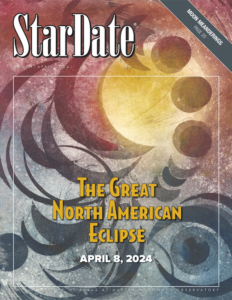
This article was previously published in the March/April 2024 issue of StarDate magazine, a publication of The University of Texas at Austin’s McDonald Observatory. Catch StarDate’s daily radio program on more than 300 stations nationwide or subscribe online at stardate.org .
15. How can astronomers forecast eclipses so accurately?
They’ve been recording eclipses and the motions of the Moon for millennia. And over the past half century they’ve been bouncing laser beams off of special reflectors carried to the Moon by Apollo astronauts and Soviet rovers. Those observations reveal the Moon’s position to within a fraction of an inch. Using a combination of the Earth-Moon distance, the Moon’s precise shape, Earth’s rotation and its distance from the Sun, and other factors, astronomers can predict the timing of an eclipse to within a fraction of a second many centuries into the future.
Edmond Halley made the first confirmed solar eclipse prediction, using the laws of gravity devised only a few decades earlier by Isaac Newton. Halley forecast that an eclipse would cross England on May 3, 1715. He missed the timing by just four minutes and the path by 20 miles, so the eclipse is known as Halley’s Eclipse.
16. What are the types of solar eclipses?
Total : the Moon completely covers the Sun.
Annular : the Moon is too far away to completely cover the Sun, leaving a bright ring of sunlight around it.
Partial : the Moon covers only part of the Sun’s disk.
Hybrid : an eclipse that is annular at its beginning and end, but total at its peak.
17. What are Baily’s beads?
During the minute or two before or after totality, bits of the Sun shine through canyons and other features on the limb of the Moon, producing “beads” of sunlight. They were first recorded and explained by Edmond Halley, in 1715. During a presentation to the Royal Academy of Sciences more than a century later, however, astronomer Frances Baily first described them as “a string of beads,” so they’ve been known as Baily’s beads ever since. Please note that Baily’s beads are too bright to look at without eye protection!
18. Will Earth always see total solar eclipses?
No, it will not. The Moon is moving away from Earth at about 1.5 inches (3.8 cm) per year. Based on that rate of recession, in about 600 million years the Moon would have moved so far from Earth that it would no longer appear large enough to cover the Sun. The speed at which the Moon separates from Earth changes over the eons, however, so scientists aren’t sure just when Earth will see its final total solar eclipse.
19. How will the eclipse affect solar power?
If your solar-powered house is in or near the path of totality, the lights truly will go out, as they do at night. For large power grids, the eclipse will temporarily reduce the total amount of electricity contributed by solar generation. During the October 14, 2023, annular eclipse, available solar power plummeted in California and Texas. At the same time, demand increased as individual Sun-powered homes and other buildings began drawing electricity from the power grid. Both networks were able to compensate with stations powered by natural gas and other sources.
The power drop during this year’s eclipse could be more dramatic because there will be less sunlight at the peak of the eclipse.
20. What are some of the myths and superstitions associated with solar eclipses?
Most ancient cultures created stories to explain the Sun’s mysterious and terrifying disappearances.
In China and elsewhere, it was thought the Sun was being devoured by a dragon. Other cultures blamed a hungry frog (Vietnam), a giant wolf loosed by the god Loki (Scandinavia), or the severed head of a monster (India). Still others saw an eclipse as a quarrel (or a reunion) between Sun and Moon. Some peoples shot flaming arrows into the sky to scare away the monster or to rekindle the solar fire. One especially intriguing story, from Transylvania, said that an eclipse occurred when the Sun covered her face in disgust at bad human behavior.
Eclipses have been seen as omens of evil deeds to come. In August 1133, King Henry I left England for Normandy one day before a lengthy solar eclipse, bringing prophesies of doom. The country later was plunged into civil war, and Henry died before he could return home, strengthening the impression that solar eclipses were bad mojo.
Ancient superstitions claimed that eclipses could cause plague and other maladies. Modern superstitions say that food prepared during an eclipse is poison and that an eclipse will damage the babies of pregnant women who look at it. None of that is true, of course. There’s nothing at all to fear from this beautiful natural event.
21. How do animals react to solar eclipses?
Scientists haven’t studied the topic very thoroughly, but they do have some general conclusions. Many daytime animals start their evening rituals, while many nighttime animals wake up when the eclipse is over, perhaps cursing their alarm clocks for letting them sleep so late!
During the 2017 total eclipse, scientists observed 17 species at Riverbanks Zoo in Columbia, South Carolina. About three-quarters of the species showed some response as the sky darkened. Some animals acted nervous, while others simply headed for bed. A species of gibbon had the most unusual reaction, moving excitedly and chattering in ways the zookeepers hadn’t seen before.
Other studies have reported that bats and owls sometimes come out during totality, hippos move toward their nighttime feeding grounds, and spiders tear down their webs, only to rebuild them when the Sun returns. Bees have been seen to return to their hives during totality and not budge until the next day, crickets begin their evening chorus, and, unfortunately, mosquitoes emerge, ready to dine on unsuspecting eclipse watchers.
A NASA project, Eclipse Soundscapes, is using volunteers around the country to learn more about how animals react to the changes. The project collected audio recordings and observations by participants during the annular eclipse last year, and will repeat the observations this year. Volunteers can sign up at eclipsesoundscapes.org
22. How will scientists study this year’s eclipse?
Astronomers don’t pay quite as much professional attention to solar eclipses as they did in decades and centuries past. However, they still schedule special observations to add to their knowledge of the Sun and especially the inner edge of the corona.
Sun-watching satellites create artificial eclipses by placing a small disk across the face of the Sun, blocking the Sun’s disk and revealing the corona, solar prominences, and big explosions of charged particles known as coronal mass ejections.
Because of the way light travels around the edges of an eclipsing disk, however, it’s difficult to observe the region just above the Sun’s visible surface, which is where much of the action takes place. The corona is heated to millions of degrees there, and the constant flow of particles known as the solar wind is accelerated to a million miles per hour or faster, so solar astronomers really want to see that region in detail. The eclipsing Moon doesn’t create the same effects around the limb of the Sun, so a solar eclipse still provides the best way to look close to the Sun’s surface.
For this year’s eclipse, some scientists will repeat a series of experiments they conducted in 2017 using a pair of highaltitude WB-57 aircraft to “tag team” through the lunar shadow, providing several extra minutes of observations.
Other scientists will use the eclipse to study Earth’s ionosphere, an electrically charged layer of the atmosphere that “bends” radio waves, allowing them to travel thousands of miles around the planet. Sunlight rips apart atoms and molecules during the day, intensifying the charge. At night, the atoms and molecules recombine, reducing the charge.
Physicists want to understand how the ionosphere reacts to the temporary loss of sunlight during an eclipse. They will do so with the help of thousands of volunteer ham radio operators, who will exchange messages with others around the planet. During last October’s annular eclipse, when the Moon covered most but not all of the Sun, the experiment showed a large and immediate change in the ionosphere as the sunlight dimmed.
NASA also will launch three small “sounding” rockets, which loft instruments into space for a few minutes, to probe the ionosphere shortly before, during, and shortly after the eclipse.
Another project will use radar to study changes in the interactions between the solar wind and Earth’s atmosphere, while yet another will use a radio telescope to map sunspots and surrounding regions as the Moon passes across them.
One project will piece together images of the eclipse snapped through more than 40 identical telescopes spaced along the path of totality to create a one-hour movie of the eclipse. The telescopes will be equipped with instruments that see the three-dimensional structure of the corona, allowing solar scientists to plot how the corona changes.
23. What have astronomers learned from eclipses?
Solar eclipses have been powerful tools for studying the Sun, the layout of the solar system, and the physics of the universe.
Until the Space Age, astronomers could see the Sun’s corona only during eclipses, so they traveled around the world to catch these brief glimpses of it.
Eclipses also offered a chance to refine the scale of the solar system. Watching an eclipse from different spots on Earth and comparing the angles of the Moon and Sun helped reveal the relative sizes and distances of both bodies, which were important steps in understanding their true distances.
During an eclipse in 1868, two astronomers discovered a new element in the corona. It was named helium, after Helios, a Greek name for the Sun. The element wasn’t discovered on Earth until a quarter of a century later.
An eclipse in 1919 helped confirm General Relativity, which was Albert Einstein’s theory of gravity. The theory predicted that the gravity of a massive body should deflect the path of light rays flying near its surface. During the eclipse, astronomers found that the positions of background stars that appeared near the Sun were shifted by a tiny amount, which was in perfect agreement with Einstein’s equations.
Today, astronomers are using records of eclipses dating back thousands of years to measure changes in Earth’s rotation rate and the distance to the Moon.
24. How did astronomers study eclipses in the past?
With great effort! From the time they could accurately predict when and where solar eclipses would be visible, they organized expeditions that took them to every continent except Antarctica, on trips that lasted months and that sometimes were spoiled by clouds or problems both technical and human.
During the American Revolution, for example, a group of Harvard scientists led by Samuel Williams received safe passage from the British army to view an eclipse from Penobscot Bay, Maine, on October 21, 1780. Williams slightly miscalculated the eclipse path, though, so the group missed totality by a few miles. (The expedition did make some useful observations, however.)
In 1860, an expedition headed by Simon Newcomb, one of America’s top astronomers, journeyed up the Saskatchewan River, hundreds of miles from the nearest city, braving rapids, mosquitoes, and bad weather. After five grueling weeks, they had to stop short of their planned viewing site, although at a location still inside the eclipse path. Clouds covered the Sun until almost the end of totality, however, so the expedition came up empty.
King Mongkut of Siam invited a French expedition and hundreds of other dignitaries to view an eclipse from present-day Thailand in 1868. He built an observatory and a large compound to house his guests at a site Mongkut himself had selected as the best viewing spot. The eclipse came off perfectly, but many visitors contracted malaria. So did Mongkut, who died a few weeks later.
An expedition in 1914, to Russia, was plagued by both clouds and the start of World War I. The team abandoned its instruments at a Russian observatory and escaped through Scandinavia.
The eclipse of July 29, 1878, offered fewer impediments. In fact, it was a scientific and social extravaganza. The eclipse path stretched from Montana Territory to Texas. Teams of astronomers from the United States and Europe spread out along the path. Thomas Edison stationed his group in Wyoming, where he used a tasimeter, a device of his own creation, to try to measure the temperature of the corona. Samuel Pierpoint Langley, a future secretary of the Smithsonian, was atop Pikes Peak in Colorado. Maria Mitchell, perhaps America’s leading female scientist, decamped to Denver. And Asaph Hall, who had discovered the moons of Mars just the year before, journeyed to the flatlands of eastern Colorado.
Thousands of average Americans joined the festivities, paying outrageous prices for some of the best viewing spots. Some things, it seems, never change.
25. What about lunar eclipses?
While solar eclipses happen during new Moon, lunar eclipses occur when the Moon is full, so it aligns opposite the Sun in our sky. The Moon passes through Earth’s shadow. In a total eclipse, the entire lunar disk turns orange or red. In a partial eclipse, Earth’s inner shadow covers only a portion of the Moon. And during a penumbral eclipse, the Moon passes through the outer portion of Earth’s shadow, darkening the Moon so little that most people don’t even notice it.
Lunar eclipses happen as often as solar eclipses—at least twice per year. This is a poor year for lunar eclipses, however. There is a penumbral eclipse on the night of March 24, with the Moon slipping through Earth’s faint outer shadow, and a partial eclipse on the night of September 17, in which the Moon barely dips into the darker inner shadow. Both eclipses will be visible from most of the United States.
Explore Latest Articles
Apr 10, 2024
Clint Dawson and Stephen Vladeck Honored With President’s Research Impact Award

Apr 09, 2024
UT’s Excellence and Impact On Display in Latest Graduate School Rankings

Apr 05, 2024
A UTotal Solar Eclipse

Advertisement
Supported by
Poor Nations Are Writing a New Handbook for Getting Rich
Economies focused on exports have lifted millions out of poverty, but epochal changes in trade, supply chains and technology are making it a lot harder.
- Share full article

By Patricia Cohen
Reporting from London
For more than half a century, the handbook for how developing countries can grow rich hasn’t changed much: Move subsistence farmers into manufacturing jobs, and then sell what they produce to the rest of the world.
The recipe — customized in varying ways by Hong Kong, Singapore, South Korea, Taiwan and China — has produced the most potent engine the world has ever known for generating economic growth. It has helped lift hundreds of millions of people out of poverty, create jobs and raise standards of living.
The Asian Tigers and China succeeded by combining vast pools of cheap labor with access to international know-how and financing, and buyers that reached from Kalamazoo to Kuala Lumpur. Governments provided the scaffolding: They built up roads and schools, offered business-friendly rules and incentives, developed capable administrative institutions and nurtured incipient industries.
But technology is advancing, supply chains are shifting, and political tensions are reshaping trade patterns. And with that, doubts are growing about whether industrialization can still deliver the miracle growth it once did. For developing countries, which contain 85 percent of the globe’s population — 6.8 billion people — the implications are profound.
Today, manufacturing accounts for a smaller share of the world’s output, and China already does more than a third of it . At the same time, more emerging countries are selling inexpensive goods abroad, increasing competition. There are not as many gains to be squeezed out: Not everyone can be a net exporter or offer the world’s lowest wages and overhead.
There are doubts that industrialization can create the game-changing benefits it did in the past. Factories today tend to rely more on automated technology and less on cheapworkers who have little training.
“You cannot generate enough jobs for the vast majority of workers who are not very educated,” said Dani Rodrik, a leading development economist at Harvard.
The process can be seen in Bangladesh, which the World Bank’s managing director called “one of the world’s greatest development stories” last year. The country built its success on turning farmers into textile workers.
Last year, though, Rubana Huq, chair of Mohammadi Group, a family-owned conglomerate, replaced 3,000 employees with automated jacquard machines to do complex weaving patterns.
The women found similar jobs elsewhere in the company. “But what follows when this happens on a large scale?” asked Ms. Huq, who is also president of the Bangladesh Garment Manufacturers and Exporters Association.
These workers don’t have training, she said. “They’re not going to turn into coders overnight.”
Recent global developments have accelerated the transition.
Supply chain meltdowns related to the Covid-19 pandemic and to sanctions prompted by Russia’s invasion of Ukraine drove up the price of essentials like food and fuel, biting into incomes. High interest rates, imposed by central banks to quell inflation, set off another series of crises: Developing nations’ debts ballooned , and investment capital dried up.
Last week, the International Monetary Fund warned of the noxious combination of lower growth and higher debt.
The supercharged globalization that had encouraged companies to buy and sell in every spot around the planet has also been shifting. Rising political tensions, especially between China and the United States, are affecting where businesses and governments invest and trade.
Companies want supply chains to be secure as well as cheap, and they are looking at neighbors or political allies to provide them.
In this new era, Mr. Rodrik said, “the industrialization model — which practically every country that has become rich has relied on — is no longer capable of generating rapid and sustained economic growth.”
Nor is it clear what might replace it.
There’s a future in service jobs.
One alternative might be found in Bengaluru, a high-tech center in the Indian state of Karnataka.
Multinationals like Goldman Sachs, Victoria’s Secret and the Economist magazine have flocked to the city and set up hundreds of operational hubs — known as global capability centers — to handle accounting, design products, develop cybersecurity systems and artificial intelligence, and more.
Such centers are expected to generate 500,000 jobs nationwide in the next two to three years, according to the consulting firm Deloitte .
They are joining hundreds of biotech, engineering and information technology companies including homegrown giants like Tata Consultancy Services, Wipro and Infosys Limited. Four months ago, the American chip company AMD unveiled its largest global design center there.
“We have to move away from the idea of classic development stages, that you go from the farm to the factory and then from the factory to offices,” said Richard Baldwin , an economist at the IMD in Lausanne. “That whole development model is wrong.”
Two-thirds of the world’s output now comes from the service sector — a mishmash that includes dog walkers, manicurists, food preparers, cleaners and drivers, as well as highly trained chip designers, graphic artists, nurses, engineers and accountants.
It is possible to leapfrog to the service sector and grow by selling to businesses around the world, Mr. Baldwin argued. That is what helped India become the world’s fifth-largest economy .
In Bengaluru, formerly known as Bangalore, a general rise in middle-class living attracted more people and more businesses that, in turn, attracted more people and businesses, continuing the cycle, Mr. Baldwin explained.
Covid sped this transition, by forcing people to work remotely — from a different part of town, a different city or a different country.
In the new model, countries can focus growth around cities rather than a particular industry. “That creates economic activities which are fairly diverse,” Mr. Baldwin said.
“Think Bangalore, not South China,” he said.
Free markets are not enough.
Many developing nations remain focused on building export-oriented industries as the path to prosperity. And that’s how it should be, said Justin Yifu Lin , dean of the Institute of New Structural Economics at Peking University.
Pessimism about the classic development formula, he said, has been fueled by a misguided belief that the growth process was automatic: Just clear the way for the free market and the rest will take care of itself.
Countries were often pressured by the United States and the international institutions to embrace open markets and hands-off governance.
Export-led growth in Africa and Latin America stumbled because governments failed to protect and subsidize infant industries, said Mr. Lin, a former chief economist at the World Bank.
“Industrial policy was taboo for a long time,” he said, and many of those who tried failed. But there were also success stories like China and South Korea.
“You need the state to help the private sector overcome market failures,” he said. “You cannot do it without industrial policy.”
It won’t work without education.
The overriding question is whether anything — services or manufacturing — can generate the type of growth that is desperately needed: broad based, large scale and sustainable.
Service jobs for businesses are multiplying, but many offering middle and high incomes are in areas like finance and tech, which tend to require advanced skills and education levels far above what most people in developing nations have.
In India, nearly half of college graduates don’t have the skills they need for these jobs, according to Wheebox , an educational testing service.
The mismatch is everywhere. The Future of Jobs report , published last year by the World Economic Forum, found that six in 10 workers will need retraining in the next three years, but the overwhelming majority won’t have access to it.
Other kinds of service jobs are proliferating, too, but many are neither well paid nor exportable. A barber in Bengaluru can’t cut your hair if you’re in Brooklyn.
That could mean smaller — and more uneven — growth.
Researchers at Yale University found that in India and several countries in sub-Saharan Africa, agricultural workers jumped into consumer service jobs and raised their productivity and incomes.
But there was a catch: The gains were “strikingly unequal” and disproportionately benefited the rich .
With a weakening global economy , developing countries will need to wring every bit of growth they can from every corner of their economies. Industrial policy is essential, Mr. Rodrik of Harvard said, but it should focus on smaller service firms and households because that is going to be the source of most future growth.
He and others caution that even so, gains are likely to be modest and hard won.
“The envelope has shrunk,” he said. “How much growth we can get is definitely less than in the past.”
An earlier version of this article misidentified the location of IMD. It is in Lausanne, not Geneva.
How we handle corrections
Patricia Cohen writes about global economics and is based in London. More about Patricia Cohen

Bill Belichick planning to write book, nature of which still unknown: Sources

Bill Belichick is planning on writing a book, according to officials briefed on his plans.
The nature of the book is not yet fully known. In light of how he was represented in Apple TV’s recent Patriots documentary , his side of his legendary nearly quarter-century run would be of great interest. However, Belichick may just write about his views on leadership or a topic in that genre.
Advertisement
The publisher considered the favorite, Simon & Schuster’s Avid Reader Press, has produced Patriots books previously.
“We’re going to respectfully decline comment,” David Kass, the imprint’s director of publicity said when asked specifically about Belichick’s forthcoming book.
Belichick’s representative did not return calls.

Free, daily sports updates direct to your inbox. Sign up
After nearly a quarter century as the Patriots coach, Belichick, 71, was a candidate for the Atlanta Falcons’ job that went to Raheem Morris.
While Belichick may eventually return to coaching, he is talking to networks about broadcasting jobs. In meetings, he has told executives he is disinclined to be on a weekly pregame set.

Why Bill Belichick, perhaps the greatest coach in NFL history, didn't land a job
A deal with ESPN, Peyton Manning’s Omaha Productions and NFL Films is one media combination that may work out. Pat McAfee has also expressed public interest in having him on his program. McAfee has paid people, like Aaron Rodgers and Nick Saban, seven figures for weekly appearances in the past.
Apple TV’s recent documentary about the Patriots, “The Dynasty,” has received criticism because of how it portrayed Belichick, including from ex-players like Devin McCourty and Rodney Harrison. New England owner Robert Kraft expressed disapproval of the series for not focusing enough on the winning.
While Kraft didn’t point it out, many reviews have mentioned that Belichick failed to receive the credit for being the coach of the incredible run that included six Super Bowls.
Belichick and the Patriots’ dynasty have already been chronicled in many books. Most notably, Ian O’Connor’s New York Times best-seller, “Belichick,” authoritatively detailed the legendary coach’s life. Belichick did not participate with O’Connor on the book.
Required reading
- Patriots ‘Dynasty’ documentary reveals how bad Brady-Belichick relationship had gotten
- Julian Edelman, Matthew Slater among former Patriots unhappy with ‘The Dynasty’s’ portrayal of Bill Belichick
- Inside Bill Belichick’s downfall after 24 years, 6 titles with the Patriots
(Photo: Joseph Prezioso / AFP via Getty Images)
Get all-access to exclusive stories.
Subscribe to The Athletic for in-depth coverage of your favorite players, teams, leagues and clubs. Try a week on us.

Andrew Marchand is a Sr. Sports Media Columnist for The Athletic. He previously worked for the New York Post and ESPN, where he predominantly covered sports media and baseball. In 2023, Marchand was named one of five finalists for The Big Lead's "Insider of the Year" in all of sports.

IMAGES
VIDEO
COMMENTS
Nature writing has grown in popularity as a genre in recent years, but writing about nature in general can also be a great creative exercise, as it encourages you to observe details and put those observations into words. You can use these tips to practice nature writing: 1. Always keep a notebook handy. The first thing you want to do is ensure ...
The book weaves nature writing, travel, memoir, and science into a compelling story about our emerging understandings of the strange fungal world beneath our feet.
Nature writing is a type of writing in which the beauty of the natural world is observed and described, often as a way of exploring human emotion and experience. The landscapes and natural habitats that are examined in nature writing vary hugely, as does the human emotion or journey that is often probed. As such, nature writing is a broad ...
April 12, 2022. If there were a contest for Most Hated Genre, nature writing would surely take top honors. Other candidates—romance, say—have their detractors, but are stoutly defended by both practitioners and fans. When it comes to nature writing, though, no one seems to hate container and contents more than nature writers themselves.
Decorating nature with adjectives has become something of a fashion in the last decade, but there are some books whose verve is a wildflower seed bomb to the neat lawns of English prose. Principal ...
Nature writing is nonfiction or fiction prose about the natural environment. It often draws heavily from scientific information and facts while also incorporating philosophical reflection upon various aspects of nature. ... Inspired in part by the short story The Swimmer by John Cheever, it describes his experiences of 'wild swimming' in ...
Journal Examples: Keeping Track of Your Tracks. One of the many lost arts of our modern time is that of journaling. While keeping a journal is a beneficial practice for all, it is especially crucial to nature writers. John A. Murray, author of Writing About Nature: A Creative Guide, begins his study of the nature writing practice with the ...
you write, testing different styles. Pen poems about nature, create stories from an animal s perspective, write diary-style entries about your own wild experiences, or research for an essay on a particular species or behaviour. Write for yourself Nature writing doesn t have to be fancy or poetic. It s not necessarily about writing
Enter The Colors of Nature, an anthology of nature writing by people of color edited by Alison H. Deming and Lauret E. Savoy, providing deeply personal connections to — or disconnects from ...
The art of nature writing itself can be a children's story, a poem, a list, a eulogy, a translation - it can be fiction or non - written or other - short or long; it is anything that takes our world and makes it sing. The best nature writing, for me, speaks of transformation - anything from a fiercely hungry caterpillar, through to ...
Yet so much contemporary nature writing (Hartley sallied out almost a century ago) invites us - sometimes explicitly - to wonder not just at the natural world, but at the author's experience.
Nature Writing Words of Hope, and a Defense of John Muir: Kim Stanley Robinson on His Love of the Sierra Nevadas. By Daniel LoPilato June 22, 2022 ... A Florida Story April 1, 2024 by Annabelle Tometich. The Best Reviewed Books of the Month March 29, 2024. 5 Reviews You Need to Read This Week March 28, ...
Let the reader experience nature through their imagination. 7. Create emotional connections. If you are writing your own journey with nature, you will want to share your own thoughts and experiences with nature. Describe how the natural setting makes you feel, whether it's a sense of wonder, peace, awe, or even fear. 8.
Nature writing is a form of creative nonfiction in which the natural environment (or a narrator 's encounter with the natural environment) serves as the dominant subject. "In critical practice," says Michael P. Branch, "the term 'nature writing' has usually been reserved for a brand of nature representation that is deemed literary, written in ...
36 Interesting Nature Journal Prompts. Nature writing is the perfect activity for kids and students of all ages. Grab your sketch books, notebooks, pens, or crayons, and start creating some fun stuff using the prompts below. Imagine your favorite animal has the ability to speak.
John Alec Baker's 1967 novel, The Peregrine, recounts the story of a bird over ten winters, but his archive is the story of a very private man. Meet J.A. Baker - the influential nature writer ...
How to Write About Nature. #1 - Spend more time observing nature. #2 - Individualize the story. #3 - Consider if the nature you are writing about has a deeper meaning. #4 - Utilize the other senses. Book Examples That Are About Nature. Wild by Cheryl Strayed. Walden by Henry David Thoreau. Love Letter to the Earth by Thich Nhat Hanh.
Nature inspires, and so do these creative writing prompts. Today's post includes a selection of prompts from my book, 1200 Creative Writing Prompts. Enjoy! Creative writing prompts are excellent tools for writers who are feeling uninspired or who simply want to tackle a new writing challenge. Today's creative writing prompts focus on nature.
Like other writers who find inspiration in nature, I wanted to use it to contribute richness and depth to the story. And then, there's the angle I'm pushing. For what I'm interested in is the novel, first and foremost, but where the characters and their plot are underpinned by a fine-weave sewn from nature's elements.
Moving on from writing that holds the natural world at arm's length, authors have begun using intimate life to show nature as a protagonist in itself Sarah Thomas Wed 28 Sep 2022 05.40 EDT Last ...
The Road. By Cormac McCarthy. A Pulitzer Prize winner, The Road tells the story of a father and son making their way across a United States now devoid of life, save for scattered bands of other people.Some of whom are cannibals. Yeah, it's bleak. But as with other McCarthy novels, the landscape plays a central role, and a yearning for nature - now lost - fills its pages.
Almost all nature writing tells some kind of story. A writer ventures out to a lovely local wetland or to a pristine forest, experiences the beauty of it, perceives a difference in the way time ...
Nature - The creative process of writing science-inspired fiction can be rewarding — and the untapped niche is rich in opportunities for originality. ... Nature runs an 850- to 950-word science ...
Short Story for Kids written by: Carolina Mora Arévalo. Karen went for a walk in a beautiful garden, full of tulips and butterflies.The little girl loved nature and always enjoyed the fresh wind blowing through her hair. She ran from one side to the other, taking care not to damage the flowers in the beautiful garden.
The decree suspends until further notice all activities by political parties and "associations of a political nature" on the grounds of maintaining public order, the statement said. Mali has been
Then here's what the child needs to do: Step 1 - Go out one day to where there is some nature. It could be their local woods or beach, their garden, a farm, or simply the nearest park. Step 2 ...
The April 8 eclipse is the 30th of Saros 139, a series of 71 events that began with a partial eclipse, in the far north, and will end with another partial eclipse, this time in the far southern hemisphere. The next eclipse in this Saros, also total, will take place on April 20, 2042.
Atul Loke for The New York Times. For more than half a century, the handbook for how developing countries can grow rich hasn't changed much: Move subsistence farmers into manufacturing jobs, and ...
Mar 29, 2024. 182. Bill Belichick is planning on writing a book, according to officials briefed on his plans. The nature of the book is not yet fully known. In light of how he was represented in ...
The personal nature of art collections, often mirroring the collector's life journey, complicates the disposition of these assets. The art market's opacity and volatility further challenge estate ...